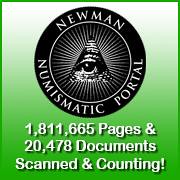
About UsThe Numismatic Bibliomania Society is a non-profit organization devoted to the study and enjoyment of numismatic literature. For more information please see our web site at coinbooks.org SubscriptionsThose wishing to become new E-Sylum subscribers (or wishing to Unsubscribe) can go to the following web page link MembershipThere is a membership application available on the web site Membership Application To join, print the application and return it with your check to the address printed on the application. Print/Digital membership is $40 to addresses in the U.S., and $60 elsewhere. A digital-only membership is available for $25. For those without web access, write to: Terry White, Treasurer AsylumFor Asylum mailing address changes and other membership questions, contact Terry at this email address: terrywhite5475@yahoo.com SubmissionsTo submit items for publication in The E-Sylum, write to the Editor at this address: whomren@gmail.com BUY THE BOOK BEFORE THE COINSale Calendar
|
- WAYNE'S WORDS: THE E-SYLUM MAY 20, 2018
- 2018 NBS BENEFIT AUCTION DONATIONS SOUGHT
- WORKMAN BOOKS ANNOUNCES JUNE 9, 2018 SALE
- KOLBE & FANNING ANNOUNCES JULY 14, 2018 SALE
- PRINTED BANKNOTE BOOK CHAPTERS AVAILABLE
- BOOK REVIEW: PATRIOTIC CIVIL WAR TOKENS 6TH ED.
- BOOK REVIEW: CHICAGO COIN CLUB MEDALS AND TOKENS
- NASCA SALES POSTED ON NEWMAN PORTAL
- NEWMAN PORTAL SEARCH: JETON
- HIGHLIGHTS FROM THE ANS LIBRARY
- ANA 2018 PHILADELPHIA WORLD'S FAIR OF MONEY EVENTS
- 1802 HALF DIME FALSE ALARM
- MORE ON HANS SCHULMAN
- NOTES FROM E-SYLUM READERS: MAY 20, 2018
- HOLED COINS AS SLAVE CHARMS
- EMERGING MEDALLIC ARTISTS WINNERS ANNOUNCED
- AMERICAN MEDALLIC SCULPTURE ASSOCIATION EXHIBIT
- VOCABULARY TERMS: CAST COPY, SHRINKAGE
- HARRY DALE KUHN (1882-1966)
- HARVEY STACK'S NUMISMATIC FAMILY, PART 18
- CLIFFORD MISHLER ON 55 YEARS IN IOLA
- NUMISMATICS AT THE CONGRESS ON MEDIEVAL STUDIES
- SPRING 2018 RARE BOOK SCHOOL SESSIONS
- WAYNE'S NUMISMATIC DIARY: MAY 20, 2018
- NUMISMATIC NUGGETS: MAY 20, 2018
- WALL STREET JOURNAL LOOKS AT COIN ROLL HUNTING
- INTRODUCING: WORLD COIN GAMES
- ICE CORES, LEAD PRODUCTION, AND ROMAN COINAGE
- CALGARY NICKLE GALLERIES WHAT IS MONEY? EXHIBIT
- COINS OF THE TIGRIS AND EUPHRATES VALLEY
- MICKLEY 1804 DOLLAR AT LONG BEACH
- 1904 OLYMPIC GOLD MEDAL FOR BASKETBALL
- BANK OF ENGLAND CLOSES BOOK ON KNICKERS HEIST
- ANOTHER D. B COOPER SUSPECT NAMED
- TRUMP SLOGAN ON $20 BILLS
- MAN WRONGLY ACCUSED OF PASSING FAKE $10 BILL
- IN OTHER NEWS: MAY 20, 2018
- BURIED BACKYARD SAFE YIELDS CASH AND JEWELS
- WHOLE SHIPMENT OF DIMES SPILLED
- FEATURED WEB SITE: IRNS PUBLICATIONS
Click here to access the complete archive
To comment or submit articles, reply to whomren@gmail.com
Content presented in The E-Sylum is not necessarily researched or independently fact-checked, and views expressed do not necessarily represent those of the Numismatic Bibliomania Society.
WAYNE'S WORDS: THE E-SYLUM MAY 20, 2018
 New subscribers this week include: Martin Warburton. Welcome aboard! We now have 5,790 subscribers.
New subscribers this week include: Martin Warburton. Welcome aboard! We now have 5,790 subscribers.
Thank you for reading The E-Sylum. If you enjoy it, please send me the email addresses of friends you think may enjoy it as well and I'll send them a subscription. Contact me at whomren@gmail.com anytime regarding your subscription, or questions, comments or suggestions about our content.
The EU's new privacy laws complicate things. Luckily we're so old fashioned technology-wise that we don't track anything but email address (and name, if the subscriber volunteers that). But please be careful not to to give people based in the EU gift subscriptions unless they request it first. If we're not sure of their location I'll contact them first for confirmation.
This week we open with some NBS news, two numismatic literature auctions, 15 paper money monographs, two book reviews and updates from the Newman Numismatic Portal.
Other topics this week include the ANS library, the ANA summer convention, holed coins as slave charms, medallic sculpture, Harry Dale Kuhns, Clifford Mishler, rare book school, coin roll hunting, World Coin Games, the Mickley 1804 dollar, and the Bank of England knickers heist.
To learn more about the John W. Adams library, Civil War Patriotic tokens, the Numismatic and Antiquarian Service Corporation of America, jetons, shrinkage, George Clapp, quarter eagle gift envelopes, "The Pill that Will", coins in silent films, and friends who think the hobby is kooky, read on. Have a great week, everyone!
Wayne Homren
Editor, The E-Sylum
2018 NBS BENEFIT AUCTION DONATIONS SOUGHT
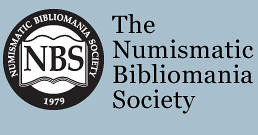 The 2018 General Meeting of the Numismatic Bibliomania Society (NBS) will be held on Friday, August 17 from 11:30 a.m. to 1:00 p.m. at the American Numismatic Association’s World’s Fair of Money in Philadelphia,
Pennsylvania. The meeting will conclude as usual with a benefit auction of numismatic books and related items donated to be sold for the benefit of the organization.
The 2018 General Meeting of the Numismatic Bibliomania Society (NBS) will be held on Friday, August 17 from 11:30 a.m. to 1:00 p.m. at the American Numismatic Association’s World’s Fair of Money in Philadelphia,
Pennsylvania. The meeting will conclude as usual with a benefit auction of numismatic books and related items donated to be sold for the benefit of the organization.
Donations have already been received from several NBS supporters, but more are needed to make the auction a success. NBS Board member David Fanning has volunteered to catalogue and conduct this year’s sale. Donated items may be sent to him at:
Kolbe & Fanning Numismatic Booksellers
141 W Johnstown Road
Gahanna OH 43230
He can be reached at df@numislit.com if you have any questions. All proceeds from the auction go to the Numismatic Bibliomania Society, with any expenses incurred in conducting the sale being donated to the NBS. Thank you for your consideration. Donations must be received by July 15.
A deluxe copy of 1792: Birth of a Nation’s Coinage, by Pete Smith, Joel J. Orosz, and Leonard Augsburger (donated by Len Augsburger).
To read the earlier E-Sylum article, see:
NBS BENEFIT AUCTION AT 2018 ANA CONVENTION (http://www.coinbooks.org/v21/esylum_v21n09a04.html)
THE BOOK BAZARRE
WORKMAN BOOKS ANNOUNCES JUNE 9, 2018 SALE

Workman's Books is conducting its first bid sale of numismatic, paper money, treasure, and pirate books, which closes on Saturday, June 9, 2018. The bid sale includes 1500 lots of rare and hard-to-find references on Numismatics, Exonumia & Tokens, Banking Histories, Treasure, Pirates, Metal Detecting, Archaeology, History, and many other topics.
The bid sale is being held through the online venue iCollector, and all registrations, approvals, and bids will be handled there. For this bid sale the lots will be closing on a timed interval with extensions for any bids placed within 5 seconds of closing. If you already have an iCollector account, you still must "GET APPROVED" to bid for each sale by entering and confirming your information for this bid sale, like reviewing your shipping information and choosing your preferred way of payment. Remember, tie bids go to the earliest bidders, so don't wait for the lots to close to bid on anything for which you have a strict number in mind.
Now is the perfect time to register for the bid sale, as any registration issues can certainly be accommodated more easily in advance. Do not wait to register the last day. Registration and bidding online are always FREE (no extra fees or percentages for bidding online). Once you are registered and automatically approved, first be sure to bookmark the items that interest you.
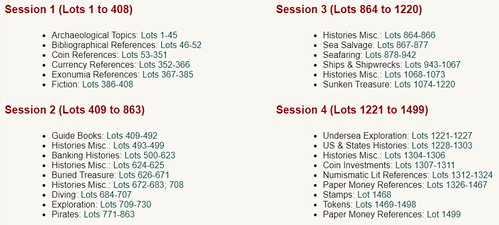
For more information, or to bid, see:
http://www.icollector.com/Treasure-Pirate-History-Coin-Paper-Money-Rare-Book-Sale-June-9-2018_a35018

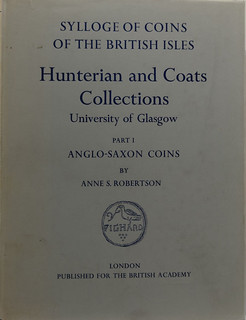
Lots 185 and 194
Lot 185
Kelly, E. M. SPANISH DOLLARS AND SILVER TOKENS: AN ACCOUNT OF THE ISSUES OF THE BANK OF ENGLAND 1797-1816. Spink & Son Ltd. 1976. 4to, 145 pages; Hardcover w/ DJ; 8 plates. Subject: Coinage - Great Britain
For the complete lot description, see: 185 Kelly: Spanish Dollars and Silver Tokens: An Account of the Issues of the Bank of England 1797-1816 (http://www.icollector.com/Kelly-Spanish-Dollars-and-Silver-Tokens-An-Account-of-the-Issues-of-the-Bank-of-England-1797-1816_i30112157)
Lot 194
UNIVERSITY OF GLASGOW - PART I - ANGLO-SAXON COINS. Spink & Son Ltd. 1961. 4to, 86 pages; Hardcover w/ DJ; 42 plates. Subject: Coinage - Great Britain
For the complete lot description, see: 194 Robertson: Sylloge of Coins of the British Isles - 2 - Hunterian and Coats Collections University of (http://www.icollector.com/Robertson-Sylloge-of-Coins-of-the-British-Isles-2-Hunterian-and-Coats-Collections-University-of_i30112166)
To visit the Workman's Books web site, see:
http://www.workmansbooks.com/

KOLBE & FANNING ANNOUNCES JULY 14, 2018 SALE
July 14, 2018 Sale to Include Complete Run of Chapman Catalogues, Including All Published Plated Sales, and Other Exceptional Items
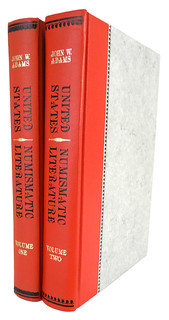 Kolbe & Fanning Numismatic Booksellers will celebrate our 150th Auction by offering highlights of the extraordinary numismatic library formed by author and researcher John W. Adams on July 14, 2018.
Kolbe & Fanning Numismatic Booksellers will celebrate our 150th Auction by offering highlights of the extraordinary numismatic library formed by author and researcher John W. Adams on July 14, 2018.
The Adams Library includes one of the finest collections of American numismatic auction catalogues ever assembled. Formed over the course of forty years, it has been meticulously cared for and gradually upgraded over time. Unpriced catalogues have been replaced with priced catalogues; special editions and plated copies have been eagerly pursued.
The result is enormously impressive. To give one notable example, Sale 150 will include every catalogue issued by Henry and Samuel Hudson Chapman. Every unplated catalogue will be offered, as will every published plated sale. This is the first time such an offering has been made. Exceptional runs of other cataloguers will also be featured, including complete or near-complete sets of the catalogues of Tom Elder, William Hesslein, Ed Frossard, Ben Green, Charles Fisher, Wayte Raymond, J.W. Scott, New York Coin & Stamp Company, and others.
While the focus of the sale will be on auction catalogues, a number of exciting books and periodicals will also be included. Of particular note are: an original copy of the very rare separate bound offprint of Edmund Slafter’s The Vermont Coinage, Bolen’s rare 1905 catalogue of his medals, cards and facsimiles; the very rare Bowers Coin Company Catalog of Rare United States Coins; the 1708 Act of Queen Anne regulating the value of coins in America; and an entirely complete set of the rare Canadian Antiquarian and Numismatic Journal. Over the next several weeks, we will provide sneak peeks at some of the sale’s highlights.
An extensive, full-color catalogue will be issued, and the sale will feature live online bidding using Kolbe & Fanning’s custom third-party online bidding platform. More information on the sale itself will be published in the near future.
This is not the first time our firm has been chosen to sell material from the Adams Library, with an excellent selection of catalogues having been offered in 1990 in our Sale 44. We are proud and excited to have been selected again for this task, and we are looking forward to making further details public in the weeks to come. The catalogue is still being prepared, but should be available online in early June. Bidders wishing to make an appointment to view auction lots are invited to contact David Fanning at df@numislit.com.
Kolbe & Fanning Numismatic Booksellers LLC is a licensed and bonded auction firm in the State of Ohio. For more information, please see the Kolbe & Fanning website at numislit.com or email David Fanning at df@numislit.com.
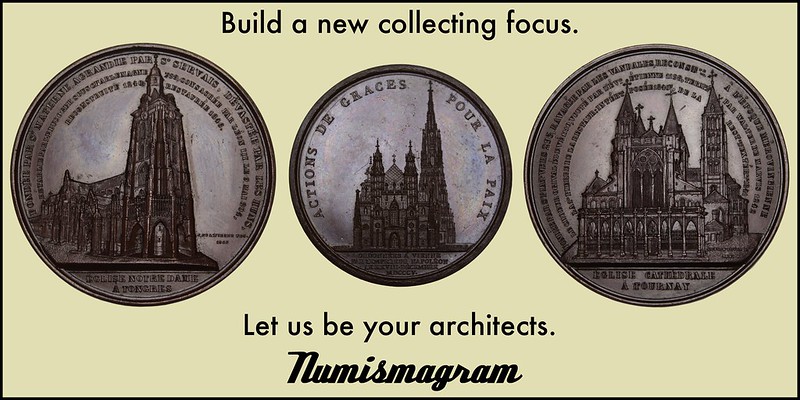
PRINTED BANKNOTE BOOK CHAPTERS AVAILABLE
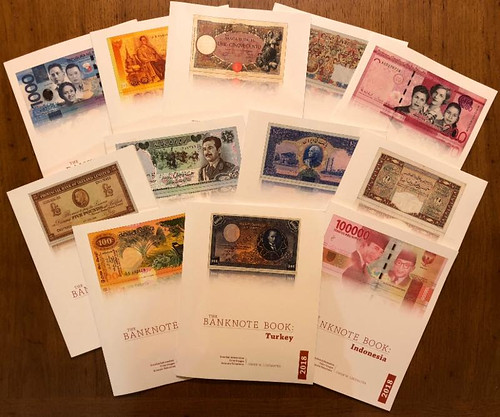
Currently 265 chapters of The Banknote Book have been published as individual high-resolution PDF files. This represents a total of 4,706 pages covering 44,551 types and varieties.
In response to customer demand, select chapters of The Banknote Book are now available in print.
The following chapters can now be ordered directly from Lulu.com:
Ceylon
Dominican Republic
Egypt
Germany
Indonesia
Iran
Iraq
Italy
Lebanon
Macau
Northern Ireland
Philippines
Syria
Thailand
Turkey
Prices range from $29.99 to $39.99, depending upon length, and all are professionally printed in full color on 80-pound glossy paper as perfect-bound paperback books.
Anyone purchasing from Lulu.com is entitled to a coupon code good for a free download of the PDF version of the chapter (US$9.99 value).
Use coupon code SHIPIT2018 when ordering on Lulu to get free mail or 50% off ground shipping. Expires midnight 21 May 2018.
Within 6 to 8 weeks these titles will also be listed in major bibliographic databases and available on Amazon, Barnes & Noble, and other retail sites.
For more information, or to order, see:
https://www.lulu.com/shop/search.ep?keyWords=Linzmayer&type=
For more information on The Banknote Book, see:
http://www.banknotenews.com/banknote_book/banknote_book.php

BOOK REVIEW: PATRIOTIC CIVIL WAR TOKENS 6TH ED.
The Civil War Token Society Raises the Bar With Patriotic Civil War Tokens, Sixth Edition
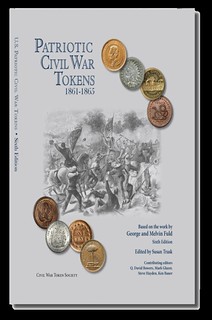 The Civil War Token Society has done it again! Demonstrating its role as a leader in independent numismatic publishing, the Society has recently issued the sixth edition of Patriotic Civil War Tokens. The
new production updates the classic standard reference by George and Melvin Fuld, published first in 1960 by Whitman Publishing and penultimately in 2005.
The Civil War Token Society has done it again! Demonstrating its role as a leader in independent numismatic publishing, the Society has recently issued the sixth edition of Patriotic Civil War Tokens. The
new production updates the classic standard reference by George and Melvin Fuld, published first in 1960 by Whitman Publishing and penultimately in 2005.
Numismatist Susan Trask, currently president of the Civil War Token Society, served as chair of the CWTS committee that spearheaded the planning, and did the heavy lifting, required for this beautifully produced update. Their effort included years of research and thousands of hours of cataloging, and the book’s acknowledgments read like a “Who’s Who” among modern Civil War token historians. (Credit is also given to contributors to the first five editions, including the original authors, George and Melvin Fuld; the late Evelyn R. Mishkin and Steve Tanenbaum; and many others.) Trask edited the sixth edition, with notable assistance from Q. David Bowers, Mark Glazer, Steve Hayden, and Ken Bauer.
Earlier this decade, CWTS secretary John Ostendorf served a similar role on another Society project. He chaired and edited the third edition of the Fulds’ U.S. Civil War Store Cards (covering merchant- and service-advertising tokens), which was published in 2014. The committee-fueled work on that book was a model for the Patriotic update (covering non-advertising tokens with political and social messages). The books were not simply revised, but completely overhauled and modernized with today’s readers, researchers, and collectors in mind.
Information architecture, navigational elements, layout, the use of color, enlarged high-resolution photography, high-quality paper, a large trim size, a hard cover and sturdy binding—all of these factors combine to produce an impressive and eminently usable tome. It’s heartening to note that other researchers, writers, editors, and publishers, in other numismatic fields, are making similar inroads into modernizing classic references. Harry Schultz, an expert in 1903–1945 Philippine coinage and medals minted under U.S. sovereignty, comes to mind, with his in-the-works update and expansion of Lyman L. Allen’s U.S./Philippine Coins.
On a broader scale, the hobby-standard Guide Book of United States Coins has been dramatically enlarged in recent years to a deluxe edition (popularly nicknamed “Mega Red” for its six-pound, 1,504-page presence). With a few exceptions, the old style of text-only manuscripts, or volumes plated with engravings or black-and-white photographs, simply will not satisfy today’s mainstream numismatic audience. The Civil War Token Society gives that audience what it wants.
The first 100 or so pages of Patriotic Civil War Tokens is a valuable education in the subject matter:
Chapter 1 (“How to Use This Book”) establishes basic definitions and helps the reader navigate the book’s catalog.
Chapter 2 (“In the Marketplace”) discusses grading, factors affecting value, and advice on being a smart buyer. Not shying away from reality, it also gives a well-illustrated overview of counterfeit Civil War tokens, picturing examples created in the 1960s, Chinese copies dating from 2007 to 2010, and modern counterfeits found on eBay from 2014 forward. The enlarged illustrations, showing edges as well as obverses and reverses, are accompanied by charts and narrative guidance.
Chapter 3 (“Enjoying Your Collection”) explores Civil War tokens as an ideal hobby pursuit—their reasonable cost, the many ways to collect them, their historical interest, the breadth and significance of their designs (including patriotic and military emblems, idealized portraits, historical portraits, and mysterious and illogical symbols and subjects), and their connection to wartime society, culture, and national developments.
This chapter also includes an illustrated catalog of die inscriptions and motifs, with special attention paid to Rhode Island “Hope” tokens, presidential campaign tokens, the famous Wealth of the South tokens, Abraham Lincoln, and other specialized topics.
Chapter 3’s study of dies and their characteristics is sure to be educational for any coin collector, whether an active collector of Civil War tokens or not. Planchet clips and voids, striations, foreign materials in the planchet, delaminations, adjustment marks, cutter marks, cracks, deterioration, rust and overpolishing, doubled strikes, weak strikes, off-centers, brockages, and other fascinating aspects of the technicalities of minting are laid out with detailed narrative and good photography.
Chapter 4 (“The Civil War and Money”) sets these tokens in their historical context, telling why and how they came to exist in the first place. It’s a nicely illustrated and engaging immersion in America’s financial and economic scene during the Civil War. Chapter 4 alone will repay the cost of the book for any serious student of U.S. history.
Chapter 5 (“Collectors and Collections”) gives a history of coin and token collecting in the United States around the time of the Civil War, and then into the 1900s and the modern era. This introduces the reader to personalities of the past—collectors, dealers, die sinkers, merchants, writers, and others. Without explicitly stating it, the implication is clear, and satisfying: when you collect Civil War tokens, you become part of a long and storied line of numismatists going back to the 1860s.
Chapter 6 (“Civil War Token Makers and Issuers”) offers brief biographies of more than two dozen individuals and firms involved in creating Civil War tokens, from Connecticut, Illinois, Indiana, Maryland, Massachusetts, Michigan, New York, Ohio, Pennsylvania, and Wisconsin. Like chapters 4 and 5, this is wonderful historical context that enriches the collector’s experience and understanding.
After those first six chapters, the next 150-plus pages in chapter 7 give an illustrated catalog of Civil War patriotic tokens by variety. While chapters 1 through 6 were filling appetizers, this is the meat of the book: a richly illustrated study of more than 500 dies, with descriptions and data on obverse/reverse pairings, rarities, metallic compositions, and other characteristics. Kudos to the Civil War Token Society for investing in full color and laying out the book with enlarged photographs—that attention to detail serves the reader well. And readers be warned: if the first six chapters moved you toward the edge of token-mania, the seventh will push you over. It is as close to perusing a longtime hobbyist’s outstanding collection as you can get, without actually being seated at his library desk with magnifying glass in hand.
After chapter 7, the book’s back matter shares reminiscences by the late great Dr. George Fuld, an alphabetical listing of legends, a detailed illustrated glossary, a bibliography, a table converting patriotic token dies to corresponding store card dies, and an appendix of photo diagrams to help visually differentiate between similar dies, based on the work of Jack Detwiler.
These elements combine to make the sixth edition of Civil War Patriotic Tokens a perfect introduction for the beginning collector, and a valuable reference for the more experienced numismatist. My advice is to add this book to your personal library. Connect yourself to the long, grand tradition of numismatists interested in this important field of Civil War–era money. Otherwise you risk being left behind by the latest and most active generation of American historians and collectors.
For more information, or to order, see:
http://www.cwtsociety.com/

BOOK REVIEW: CHICAGO COIN CLUB MEDALS AND TOKENS
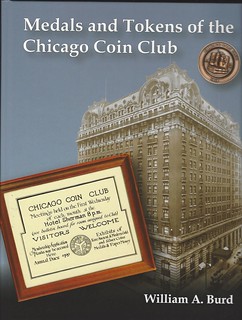 I would like to add a few comments to the book review by John and Nancy Wilson on Bill Burd’s book Medals and Tokens of the Chicago Coin Club in last week’s E-Sylum.
I would like to add a few comments to the book review by John and Nancy Wilson on Bill Burd’s book Medals and Tokens of the Chicago Coin Club in last week’s E-Sylum.
My first response in viewing this book was “wow” for the vast number and variety of numismatic items issued by the Chicago Coin Club. The Club is certainly among the top coin clubs in America with an active program issuing such items. I owned two of those listed at one time but was unaware of the hundreds of others.
The book covers numismatic items from the personal collection of author Bill Burd. Listing items “from the author’s collection” is the most reliable documentation for any work. The reader can be assured the accuracy of the author’s descriptions for his familiarity of the chosen objects; it is the obvious first source for a search for information about the items to be discussed.
A second source should be public numismatic collections, the museums in the field. Their mission is to furnish just such information to authors seeking data from items in their collections.
A third source are the producers which could furnish information only they can supply. Subsequent sources are fellow collectors and dealers who would deal in such items. As a cataloger of Medallic Art Company’s archives I could have supplied data on two medals issued early in the Club’s history unlisted in Bill’s book. The text for each item is – not a catalog format – but a chatty comment about each.
The author must make the decision: does he want a comprehensive listing of all known specimens – of far greater reference value – or does he want to document his own collection. Bill Burd chose the latter.
In addition to the medals and coins mentioned in the title, Bill included the club’s wooden nickels, elongated, counterstamped, encased postage, odd and curious, specimen sheets and other paper items. Plus he included more than 40 associated items to the major items; these add lore and heritage of the items.
Forming the collection took a great deal of time and dedication to acquire the items as they came on the market, to the author’s credit. The Chicago Coin Club is fortunate to have such a knowledgeable and committed numismatist as Bill Burd for a member!
To read the earlier E-Sylum articles, see:
NEW BOOK: CHICAGO COIN CLUB MEDALS AND TOKENS (http://www.coinbooks.org/v21/esylum_v21n10a04.html)
BOOK REVIEW: CHICAGO COIN CLUB MEDALS AND TOKENS (http://www.coinbooks.org/v21/club_nbs_esylum_v21n19.html#article5)
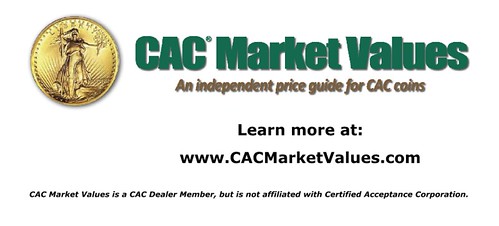
NASCA SALES POSTED ON NEWMAN PORTAL
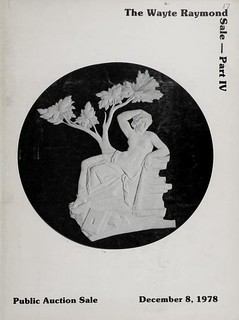 The Numismatic and Antiquarian Service Corporation of America (NASCA) conducted a number of important numismatic auction sales in the late 20th century. Newman Portal has posted a group of 101 recently scanned
auction sale catalogs, dated from 1976-1992. Martin Gengerke notes sales 1-53 (1976-1983) were conducted under Doug Ball (Herbert Melnick was the other driving force), and sales 54-56 (1984-1985) under the ownership of Jules
Karp, after which time the firm was acquired by R. M. Smythe.
The Numismatic and Antiquarian Service Corporation of America (NASCA) conducted a number of important numismatic auction sales in the late 20th century. Newman Portal has posted a group of 101 recently scanned
auction sale catalogs, dated from 1976-1992. Martin Gengerke notes sales 1-53 (1976-1983) were conducted under Doug Ball (Herbert Melnick was the other driving force), and sales 54-56 (1984-1985) under the ownership of Jules
Karp, after which time the firm was acquired by R. M. Smythe.
NASCA attracted strong catalogers, including Carl Carlson who worked from there 1978 to 1982, and Paul Bosco, who consulted with NASCA from 1975 to 1987. NASCA also published Milton Friedberg’s foundational work on fractional currency in 1978. Newman Portal acknowledges John Herzog and Robin Majlak for their assistance with this project.
Image: Cover of NASCA’s Wayte Raymond part IV sale catalog, December 1978
Link to NASCA sales on Newman Portal:
https://nnp.wustl.edu/library/auctioncompanydetail/511370
Link to R.M. Smythe sales on Newman Portal:
https://nnp.wustl.edu/library/auctioncompanydetail/511718
Link to Paul Bosco’s recollections of NASCA:
http://www.coinbooks.org/esylum_v14n36a10.html
NEWMAN PORTAL SEARCH: JETON
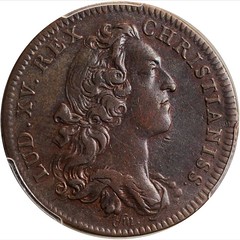
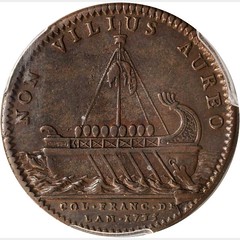
A Newman Portal user this week searched for the term “jeton.” This is a term that most readers have seen, but can’t necessarily define. Frey’s Dictionary (American Journal of Numismatics, 1916) gives the definition
“a counter which can be traced in France to the thirteenth century…the name is derived from the verb ‘jeter’ [meaning] to throw, to cast... they were first struck in copper, brass, and other base metals, but at a later period when they were intended as gifts, they were frequently made of silver and gold.”
The standard reference today is Jean Lecompte’s Monnaies et Jetons des Colonies Français (2000). A typical example is Lecompte-150, as cataloged in Stack’s Bowers 11/2014 sale (lot 3003, realized $235). This piece is dated 1755 and exhibits a bust of Louis XV.
Link to Newman Portal Dictionary:
https://nnp.wustl.edu/library/dictionary
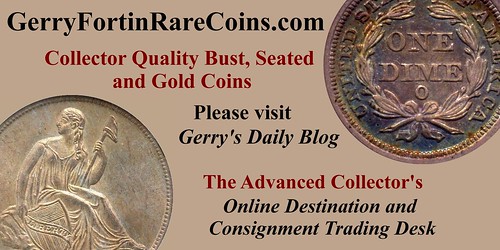
HIGHLIGHTS FROM THE ANS LIBRARY
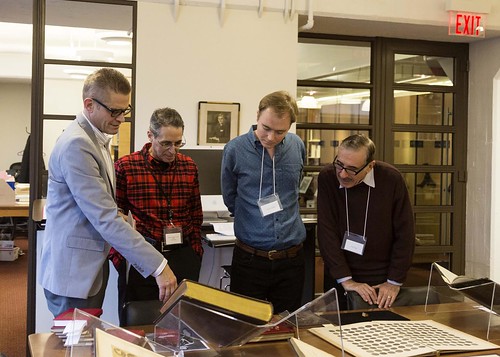
David Hill, Eric Krauss, Matthew Ruttley, and Peter Sugar.
The Library figured prominently into a couple of the Saturday lunch talks that the ANS has been hosting lately. One topic was digitization, and it was a great opportunity to talk about our collaboration with the Newman Numismatic Portal and Internet Archive and also to look back at the Society’s early use of computers to manage its curatorial and library collections, efforts conceived and funded by the ANS’s great benefactor and president, Harry Bass, beginning in the 1980s.
On another Saturday the subject was numismatic book collecting, and for that one I was joined by bibliophile and collector Jonathan Kagan who brought in some of his own treasures to talk about. For our presentation, we looked at these and some of the standout items from the ANS Library (many of which were donated by the Harry Bass Foundation).
In the United States, one of the earliest general numismatic books published was A Manual of Gold and Silver Coins of All Nations (1842) by Jacob Eckfeldt and William Du Bois, assayers at the U.S. Mint. Among other things, the book is remembered as being the first to illustrate the 1804 dollar.
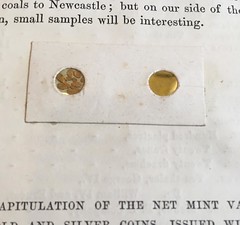 In 1850 the authors published a supplement, much of which dealt with practical matters arising from the recent California Gold Rush, such as varying degrees of that metal’s fineness and fees for coining gold at the
mint. In one section, the authors wanted to show what the gold looked like before and after iron is removed by the mint, as they were concerned that the lightening of the hue might lead some to suspect the fraudulent
addition of silver. Like so many others publishing in the years before it was possible to reproduce color photographs, the authors had to get creative to illustrate this. To make their point, they included actual gold
samples in each publication.
In 1850 the authors published a supplement, much of which dealt with practical matters arising from the recent California Gold Rush, such as varying degrees of that metal’s fineness and fees for coining gold at the
mint. In one section, the authors wanted to show what the gold looked like before and after iron is removed by the mint, as they were concerned that the lightening of the hue might lead some to suspect the fraudulent
addition of silver. Like so many others publishing in the years before it was possible to reproduce color photographs, the authors had to get creative to illustrate this. To make their point, they included actual gold
samples in each publication.
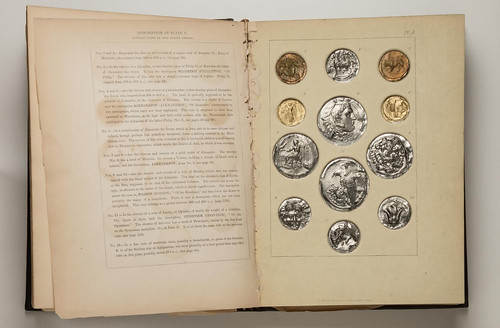
(Another innovative approach to illustration dating from the same period can be seen [here], where the author included three-dimensional facsimiles of coins in his book.)
Another numismatic rarity is S. H. (Samuel Hudson) Chapman’s The United States Cents of the Year 1794 (1923). According to ANS member and Large Cent collector Jim Neiswinter, there are only about 10 or so copies of the original 1923 version known today.
Chapman published 100 of them, but they were so em- barrassingly rife with errors, he was moved to clean the book up and republish it in 1926, recalling the old ones and offering new ones as replacements. The ANS has two copies of the 1923 version, and one of them is particularly special as it belonged to Large Cent collector and scholar George Clapp (1858–1949), who had filled it with his own acerbic annotations, which Neiswinter amusingly discusses in his book About Cents II (2017).
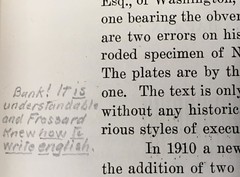 In the margins of his copy of the Chapman book, Clapp jotted comments on the numerous factual errors he found. When Chapman boasts that he didn’t feel the need to consult a work by his old nemesis, Edward Frossard,
Clapp dryly notes, “Too bad, for had he used Frossard’s text he could have avoided some of the errors of which this book is full.” It wasn’t just the factual errors that got to Clapp. He was appalled by Chapman’s spelling
and grammar, too. As Neiswinter puts it, “George Clapp went through this monograph like an English professor who did not like the student who wrote it.” Having slogged through one passage of Chapman’s tangled syntax, Clapp
wrote next to it: “This is a splendid [way] of how not to write English.”
In the margins of his copy of the Chapman book, Clapp jotted comments on the numerous factual errors he found. When Chapman boasts that he didn’t feel the need to consult a work by his old nemesis, Edward Frossard,
Clapp dryly notes, “Too bad, for had he used Frossard’s text he could have avoided some of the errors of which this book is full.” It wasn’t just the factual errors that got to Clapp. He was appalled by Chapman’s spelling
and grammar, too. As Neiswinter puts it, “George Clapp went through this monograph like an English professor who did not like the student who wrote it.” Having slogged through one passage of Chapman’s tangled syntax, Clapp
wrote next to it: “This is a splendid [way] of how not to write English.”
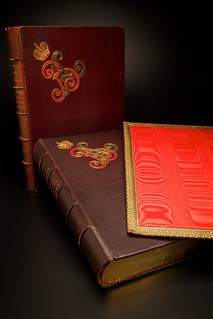 Another beautifully bound set is the Corpus of Russian Coins that once belonged to the Grand Duke Vladimir Alexandrovich (1847–1909) and was given to the Library by Catherine Bullowa Moore. It was published
by the duke’s nephew Georgii Mikhailovich (1863–1919), himself a grand duke. Georgii’s historical reputation suffers by comparison to his five brothers, who exceled in military and scholarly pursuits, and he is remembered
for living a life of indolence and leisure, devoting his time to bridge playing and other interests, such as coin and medal collecting, which he indulged by buying up existing Russian collections and building a museum in
which to display them.
Another beautifully bound set is the Corpus of Russian Coins that once belonged to the Grand Duke Vladimir Alexandrovich (1847–1909) and was given to the Library by Catherine Bullowa Moore. It was published
by the duke’s nephew Georgii Mikhailovich (1863–1919), himself a grand duke. Georgii’s historical reputation suffers by comparison to his five brothers, who exceled in military and scholarly pursuits, and he is remembered
for living a life of indolence and leisure, devoting his time to bridge playing and other interests, such as coin and medal collecting, which he indulged by buying up existing Russian collections and building a museum in
which to display them.
In the 1880s, he turned his attention to numismatic scholarship, assembling a team to conduct archival research and publishing it as the Corpus, though such was his reputation that the degree of his direct involvement in these efforts, beyond organizing and spearheading the project, is still a matter of debate.
For more information on ANS Magazine, see:
http://numismatics.org/magazine/
To visit the ANS web site, see:
http://numismatics.org/
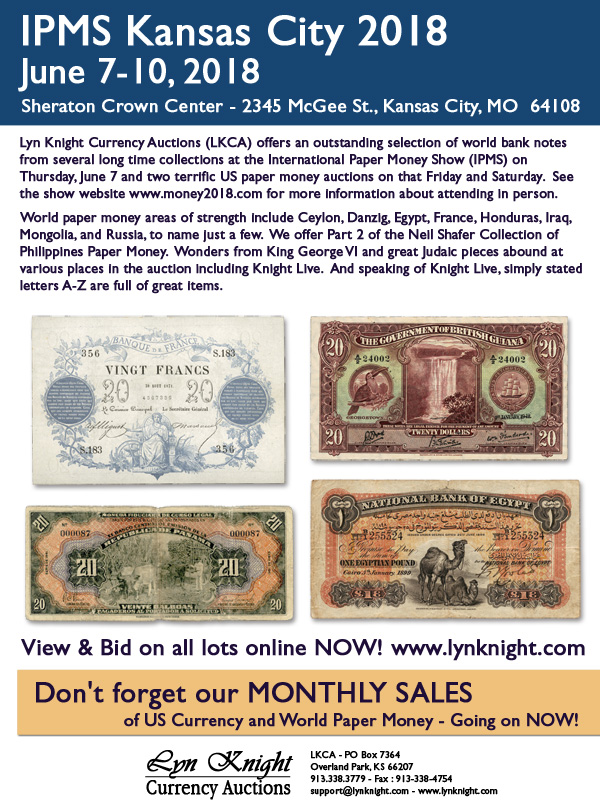
ANA 2018 PHILADELPHIA WORLD'S FAIR OF MONEY EVENTS
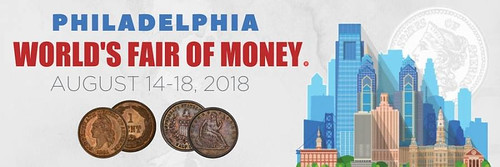
The Museum of the American Revolution
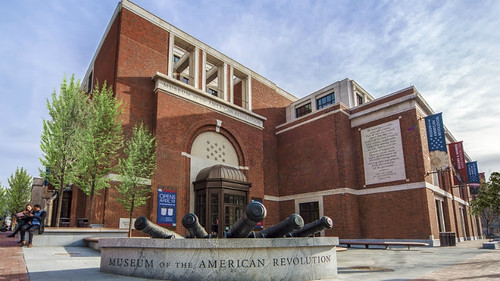
Join us for a special Philadelphia World’s Fair of Money kick-off event! The Museum of the American Revolution brings to life the events, people and ideals of our nation’s founding.
Through Revolutionary-era artifacts, immersive environments, theater experiences, and recreated historical moments, you’ll experience the dynamic story of the American Revolution from its origins to ultimate victory and its continuing relevance.
The ticket price of $50 includes round-trip shuttle transportation from the convention center, light hors d’oeuvres and a cash bar. Space is limited, so register early.
SUNDMAN LUNCHEON
To highlight the Founding Father’s role in shaping U.S. money, the 2018 theme for the Sundman Lecture Series is “Fugio to Franklins: The Influence of Poor Richard.”
Enjoy lunch with this year’s lecturers at a catered, gourmet luncheon from 12:15-1:45 p.m. Aug. 15 in Room 126A, near the lecture area. Attendees may choose from roasted chicken breast, grilled skirt steak, or a vegetarian option.
Sundman Lecture Presenters
10:00 AM—Raymond Williams: "The Influence of Ben Franklin on Early American Money"
11:15 AM—John Colley: “Benjamin Franklin—A lightning Rod for American Numismatics”
2:00 PM—David McCarthy: Franklin’s Correspondence on a Contract Coinage for the United States
3:15 PM—Rod Gillis: “Benjamin Franklin and His Influence on Modern Coinage”
The luncheon is $15 per person and is underwritten by Maynard Sundman/Littleton Coin Co. Lecture Series Endowment and David Sundman. Registration is required by July 27.
Convention Medal
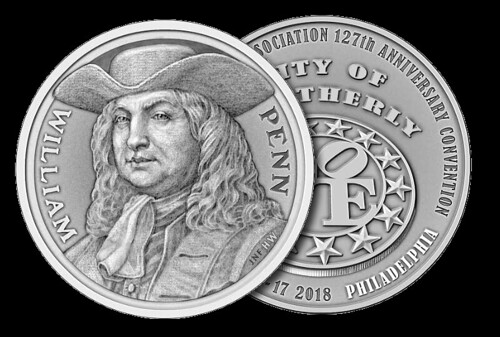
Commemorate the Philadelphia World’s Fair of Money with a silver or bronze Convention Medal. The 2018 medals are designed by Jamie Franki and sculpted by noted medallic artist Heidi Wastweet.
Obverse: William Penn; English real estate entrepreneur, philosopher, early Quaker, and founder of the British North American colony the Province of Pennsylvania.
Reverse: Robert Indiana’s famous LOVE sculpture, located in JFK Plaza near Philadelphia’s City Hall.
Medals are available as a convention medal badge (1.5” bronze medal with a ribbon drape) $20; Bronze Medal (2.75”) $65; or as a two-medal (1.5” bronze medal and 1.5” .999 FS medal, numbered) set for $100. Shipping is $6.95 per order.
To pre-order, call 800-514-2646 or visit the Shop the ANA area (booth #99) at the show.
Exhibits
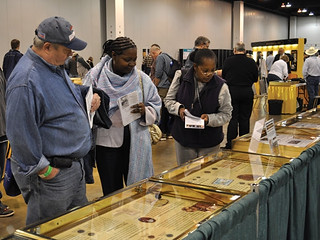 Collector exhibits are among the most popular features at every ANA show. It's a great opportunity for hobbyists to share their collections and research with fellow numismatists through high-quality displays.
The application deadline is June 15.
Collector exhibits are among the most popular features at every ANA show. It's a great opportunity for hobbyists to share their collections and research with fellow numismatists through high-quality displays.
The application deadline is June 15.
For more information see:
2018 WORLD'S FAIR OF MONEY EXHIBITS APPLICATION AND RULES (https://www.money.org/worldsfairofmoney-exhibits)
For more information on the 2018 World's Fair of Money, or to register, see:
https://www.money.org/worldsfairofmoney
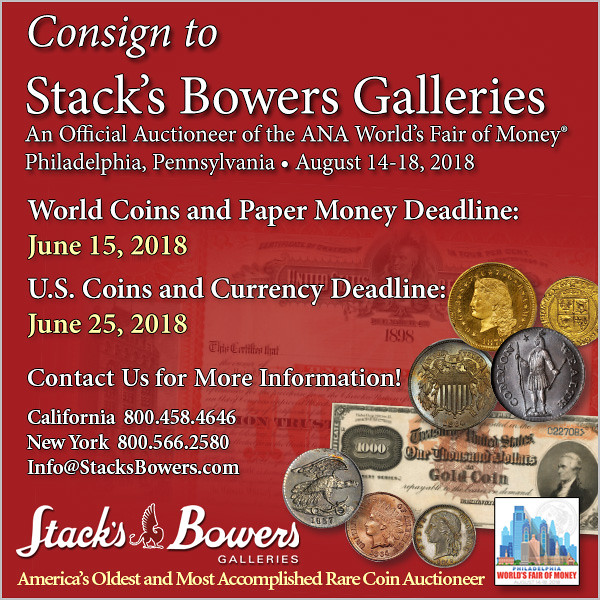
1802 HALF DIME FALSE ALARM

David Lange writes:
Regarding the story of the dubious 1802 half dime, let me suggest that the images are actually of a genuine 1802 half dollar! I only wish that a Draped Bust Half Dime could be that well struck. The poor little coins are usually rather indistinct in places.
ANA Edition reader Jack Young writes:
I saw the note about the 1802 "Half Dime" and had been previously contacted about the entry in the JR Newsletter. When I went into the Auction listing it shows this listed as a half dollar, which it appears to match, not the very rare half dime of that date.
Mark Verbeck of Lake Bluff, Illinois writes:
My first reaction was that it looked quite a bit like a half dollar, and it seemed a reasonably close match to the 1802 dies. I checked the Silver City Auctions website, and the archived description for Lot 147 in their March 21 sale now reads: "1802 Half Dollar XF."
I don't profess to be an authority on Draped Bust half dollars, but the coin offered may very well be genuine. The price seems rather low, but the grade might be somewhat optimistic. Only one die marriage (Overton 101) is known for 1802, and the quantity minted is a mere 29,890.
Martin Purdy of New Zealand writes:
Fake is one thing, but I'm also curious about how a piece with so much wear, which my UK eye would call little more than Fine, gets to be XF across the Atlantic! I know there have always been differences in grading standards on either side of that body of water, but I've only ever thought of it in terms of a half to a whole grade difference in the past. Two whole grades is starting to look seriously inflationary :-)
Ken Bressett writes:
The picture clearly shows it is an 1802 Half Dollar (O.101) in low VF condition. As such the price realized is consistent with the actual piece.
Dave Edwards of Omaha, NE writes:
I was really hoping it not to be a fake Half Dime. It looks to me that a large amount of the auction was "sold" to the same buyer - probably the owner and I doubt if sold at all.
To read the updated lot description, see:
1802 BUST HALF DOLLAR XF (http://www.silvercityauctions.com/auction.aspx?a=null&as=51971&p=3&ps=50#i29524454)
To read the earlier E-Sylum article, see:
1802 HALF DIME QUESTIONED (http://www.coinbooks.org/v21/club_nbs_esylum_v21n19.html#article23)
MORE ON HANS SCHULMAN
Dave Bowers writes:
I knew Hans Schulman quite well. He was the ultimate ladies’ man and often had a beautiful lady with him when we had dinner. Very nice man, well-liked, and always happy. Never had a bad word to say about anyone.
Howard A. Daniel III writes:
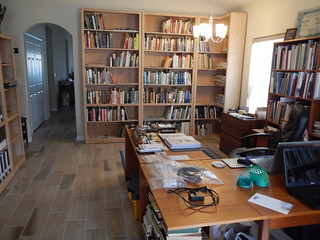 In January 1973, I departed Vietnam for an Army school before being assigned to a Defense Communications Agency laboratory in Reston, Virginia for a four year tour. We rented an apartment and started buying living
room and bedroom furniture, and also a desk, file cabinet, bookcases to furnish my office/library. I still own all of it (except the IBM Selectric typewriter) and added more over many years as you can see in the attached
image.
In January 1973, I departed Vietnam for an Army school before being assigned to a Defense Communications Agency laboratory in Reston, Virginia for a four year tour. We rented an apartment and started buying living
room and bedroom furniture, and also a desk, file cabinet, bookcases to furnish my office/library. I still own all of it (except the IBM Selectric typewriter) and added more over many years as you can see in the attached
image.
In December 1975, I was called by the Pentagon that I was on emergency orders to report to an intelligence unit in Heidelberg, Germany and had less than 72 hours to be a flight from JFK! I started to question him about how I could pack everything in time. He said no problem because it would be packed for us and we would have a fully furnished quarters. Just bring two suitcases until our stuff arrives in two weeks. I told him I had an office that needed special packing and he said it would be carefully packed. I told him I needed two bedrooms so my office would have a place. He said no problem and was there anything else? I said everything was fine except now I had to explain to my wife that we were moving and she had to immediately quit her job.
A week or so after arriving in Heidelberg, I was surprised with a letter which was forwarded from our Reston address from Hans M.F. Schulman in Alicante, Spain! He told me that he had learned about me working on Southeast Asian numismatics and that it was a badly needed area of work for the numismatic community. I was impressed! He offered me photocopies of his card file and I immediately wrote back to him that I was now in Germany and would love to see copies of his card file. I started receiving envelopes in the mail to my local German address on a regular basis. He concentrated on the old gold and silver coins and ingots of Viet Nam.
It has taken me many years to learn enough about these coins and ingots to tell most of the differences between the original pieces from several generations of replicas made in Viet Nam and France. Hans sent only a few images but the data on the weights and measurements is extremely valuable, and I acquired most of the catalogs in which the coins were shown on their plate pages. I could not thank him enough for taking the time to supply all of this information to me. Our letters continued until I received a short note from his wife that he had passed away. I was very lucky to be able to learn so much from him and to add so much information to my database.
If any reader has information and/or images of Vietnamese gold and silver coins and ingots, please send it to me at HADANIEL3@MSN.COM or P.O. Box 880067, Port Saint Lucie, FL 34988-0067.
Paul Nicholson writes:
I have fond memories of the Schulman offices in New York in the late 1960s and early 1970s. I had become interested in British coinage as a kid and they had terrific inventory. Mr. Schulman was always courteous and helpful when there, though I dealt mostly with one of his colleagues, Vincent (I can't remember his last name). But even though I wasn't even a teenager, I was always treated with respect -- something that has stuck with me almost fifty years later. Thank you the bio -- I knew the family had been in the business for a while, but I don't think I realized it had been that long.
David Hill of the American Numismatic Society writes:
Talk of the Schulman family in the last few E-Sylums had me writing to Laurens Schulman about an article I wrote last year on Hans and his father Maurits for ANS Magazine (2017 issue 2). Laurens was kind enough to point out an error I had repeated regarding the founder of the original firm, J. Schulman.
Online resources refer to him as Jacob “Jacques” Schulman, and John Spring, in his 2009 book on ancient coin auction catalogs, calls the founder “the first Jacques Schulman.” In fact, according to Laurens, his name was simply Jacob. Jacques, Laurens’s father, came later. Also causing confusion is the fact that, after the J. Schulman firm ceased operation during World War II, when Maurits, who was running the firm, was killed at Sobibór by the Nazis, Jacques Schulman, who had been operating his own firm since 1937, moved into the building where the J. Schulman firm had been operating for decades.
So the original J. Schulman (Jacob’s firm) was at 448 Keizersgracht, Amsterdam, up until the war, and Jacques Schulman, a different firm, was there after. I thought I had all the different Schulmans sorted out but apparently not! I hope this helps set the record straight.
To read the earlier E-Sylum articles, see:
HANS MORITS FRIEDRICH SCHULMAN (1913-1990) (http://www.coinbooks.org/v21/esylum_v21n18a21.html)
HANS SCHULMAN AND THE SCHULMAN FAMILY (http://www.coinbooks.org/v21/club_nbs_esylum_v21n19.html#article17)
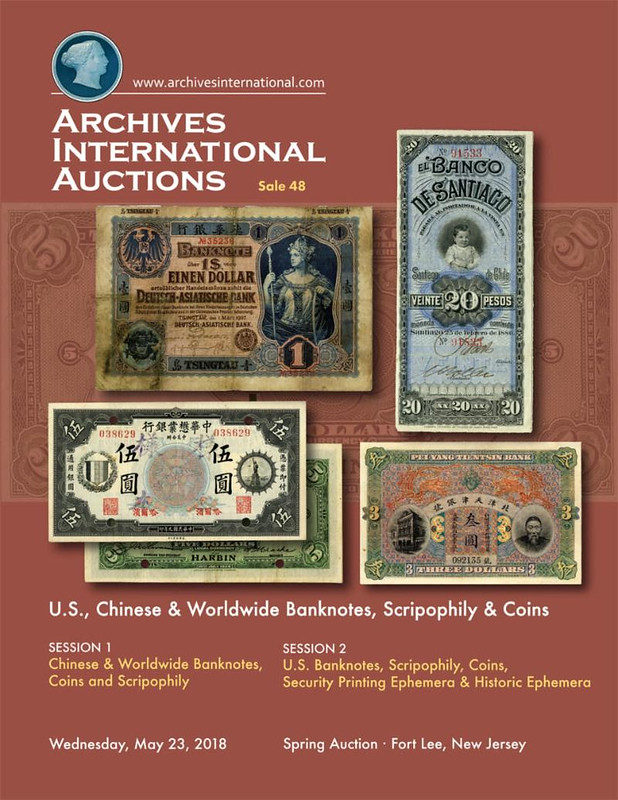
NOTES FROM E-SYLUM READERS: MAY 20, 2018
More on Charles A. Ricard
David Thomason Alexander writes:
I was delighted to read the article on the late Charles A. Ricard and his Napoleonic collection. I enjoyed several conversations with Charles in recent years and investigated one particularly interesting sidelight involving him and Napoleon at the Rochester Numismatic Association.
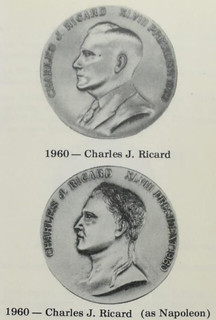 When I joined the Coin World staff in 1974 I found a full set of the Token & Medal Society's TAMS Journal. There was an early article reviewing the TAMS Presidential Medals which have appeared
annually since 1912-1913. I idly glanced over photo plates, each medal obverse with the name of the president portrayed, "Dr. George French... John J. Pittman..." Then I was bowled over by two photos, "Charles
A. Ricard, Charles A. Ricard as Napoleon!" The first was dressed in a business suit and tie, the second was an undraped bust with laurel wreath!
When I joined the Coin World staff in 1974 I found a full set of the Token & Medal Society's TAMS Journal. There was an early article reviewing the TAMS Presidential Medals which have appeared
annually since 1912-1913. I idly glanced over photo plates, each medal obverse with the name of the president portrayed, "Dr. George French... John J. Pittman..." Then I was bowled over by two photos, "Charles
A. Ricard, Charles A. Ricard as Napoleon!" The first was dressed in a business suit and tie, the second was an undraped bust with laurel wreath!
Only years later did I learn directly from Charles that only ONE existed, made by meticulously re-engraving a medal with the business suit! This unique piece was created as a tribute to Charles and his already famous Napoleonic collection! Marvelous.
To read the earlier E-Sylum articles, see:
REMEMBERING CHARLES J. RICARD (http://www.coinbooks.org/v20/esylum_v20n36a12.html)
REFLECTIONS ON A COLLECTOR: CHARLES J. RICARD (http://www.coinbooks.org/v21/club_nbs_esylum_v21n19.html#article19)
Quarter Eagle Gift Envelope Images Sought
David Lange writes:
One of my upcoming columns makes reference to the small gift envelopes made for presenting quarter eagle coins a century or so ago. I sold one of these on eBay, and I wish now that I'd saved the photos. I'm hoping that a reader has such an item and can send me photos or loan it for that purpose.
Publishing Shortfalls and Mixups
Regarding the the July-August 1999 Rare Coin Review article and the article in the Aspen Democrat about coining at the Denver Mint, Dave Lange writes:
We have a choice of deciding which story is the one to believe. Non-numismatic publications are notorious for misreporting facts about coins. In comparison, the list I used is from an untraceable source and could be equally unreliable. It may be that the Denver Mint began producing planchets for half dollars on February 1, 1906 in anticipation of coinage, as the reporter made no comment about actually seeing finished coins. I believe that would have been an integral part of the story, as most such accounts relate the pleasure of handling the new "mint drops," "silver jewels" or other such journalistic puffery.
This week, Dave adds:
In all likelihood my untracable source (the clipping from Rare Coin Review) was, in fact, the Morgan article somehow separated from its original source.
Dave Stone writes:
I looked up the Rare Coin review issue that David Lange used as a source for his excellent column. There is a one-to-one correspondence between the issues on Edward B. Morgan’s 1914 ANS Exhibition list and the issues covered in the RCR, and the dates agree in every case. It seems extremely likely that the 1914 listing was the source for the RCR document.
To read the earlier E-Sylum article, see:
MORE ON THE FIRST COINS OF THE DENVER MINT (http://www.coinbooks.org/v21/club_nbs_esylum_v21n19.html#article13)
More Recursive Definitions
Earlier, Bill Eckberg wrote:
I was always taught that you can’t define a term using another form of the same term, such as defining a runner as someone who runs. ...
Ron Haller-Williams writes:
Well, how about a linear foot as the (standardised) length of an adult man's foot?
Or a PENNYWEIGHT: The intended weight of a sterling-silver penny from before 900 until 1344, 32 grains according to the Tower pound of 7680 Tower ("wheat") grains, being 1/20 of an ounce and 1/240 of a pound: 1.457975475 grams. With the adoption of the Troy system in 1527, the "pennyweight" was now defined as 24 (Troy) grains or 1/20 of a (Troy) ounce or 1/240 of a (Troy) pound: 1.55517384 grams. Note that the Tower pound of 7680 "wheat" grains was equivalent to 5400 Troy grains (also known as barleycorns), while the Troy pound is 5760 Troy grains. (The Avoirdupois or common pound of 16 ounces is 7000 of these Troy grains.)
Also, there was one spoof definition that I came across many years ago, and, as a computer programmer with background in maths, I really liked:
RECURSION: See "recursion".
To read the earlier E-Sylum article, see:
NOTES FROM E-SYLUM READERS: MAY 6, 2018 : On Adjustment Marks (http://cbt.coinbooks.org/v21/esylum_v21n18a17.html)
On the Victory Medal
Regarding what was described in an earlier newspaper article excerpt as "The Freedom Medal", Ron Haller-Williams writes:
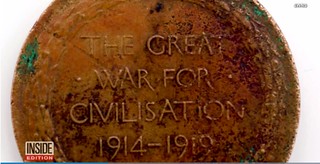 Funny, I've always known it as the Victory Medal, NOT "Freedom". Maybe poor reporting, and others copied the original mistake? 'Cos I cannot visualise museum staff making this blunder. Errhh, do
YOU know of any "Freedom Medal" NOT involving the USA or its President?
Funny, I've always known it as the Victory Medal, NOT "Freedom". Maybe poor reporting, and others copied the original mistake? 'Cos I cannot visualise museum staff making this blunder. Errhh, do
YOU know of any "Freedom Medal" NOT involving the USA or its President?
The Mirror makes an additional mistake: "His family later received the Freedom Medal, given to soldiers killed in the war."
Survivors also received this - the reporter seems to have been confusing it with the Death Plaque? Or simply misinterpreting other reports "... posthumously awarded to a soldier who died during the Great War."
To read the earlier E-Sylum article, see:
WWI MEDAL RETURNED TO SOLDIER'S FAMILY (http://www.coinbooks.org/v21/esylum_v21n18a31.html)
Cricket Coin Toss In Jeopardy
Kavan Ratnatunga of Sri Lanka writes:
Not only is trade becoming cashless, even Cricket may lose the Coin toss.
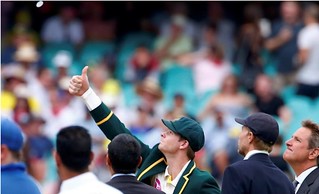 Proposals to scrap the time-honoured tradition of a coin toss prior to test matches defy logic and should not be considered, according to several former South Asian cricket captains.
Proposals to scrap the time-honoured tradition of a coin toss prior to test matches defy logic and should not be considered, according to several former South Asian cricket captains.
A ritual since the first test between Australia and England in 1877 risks extinction when the Cricket Committee of the International Cricket Council (ICC) meet in Mumbai later this month to discuss the issue.
“I’m actually at a loss to make any sense,” former India captain Bishan Singh Bedi told Times of India newspaper.
“First of all, why would you even want to tinker with a century-long tradition?” the spin great asked.
To read the complete article, see:
Cricket - Former captains flip out over plans to scrap coin toss
(https://www.reuters.com/article/uk-cricket-test-toss/cricket-former-captains-flip-out-over-plans-to-scrap-coin-toss-idUKKCN1IJ0QU)

HOLED COINS AS SLAVE CHARMS
A part of my current book project looks at enslaved refugees during the Civil War who wore pierced half dimes on strings around their ankles as charms to protect them (and especially their children) in perilous freedom journeys. In the Union camps where they arrived, they earned wages and received coins for various things and so presumably had more coins in circulation. There was no bank, so sometimes they gave their money to missionaries to hold or to buy something for them, or they bought items themselves from sutlers' tents (where the price gouging was especially terrible for African Americans). Or they might have chosen to continue to pierce the half dimes and wear them rather than spend them (the evidence for the pierced half dimes comes from archaeological digs and interviews).
My research question has both a practical and an interpretive dimension. I want to know if the pierced half dime as a charm had power that merged with the power of the nation-state or if the pierced half dime as a charm derived its power as a reappropriation of an object toward a completely different understanding of value. I don't know that it will be a completely either/or answer, but interrogating the subject in this way will yield insights nonetheless, I believe.
Practically speaking, having the following information would help, so I turn to your readership:
• In the mid-19th century/Civil War years, did piercing a dime compromise or nullify its value as legal tender?
• In 1866 the half-dime denomination began to be minted as part copper and part nickel instead of silver. The timing coinciding with the end of the Civil War certainly has significance.
• If you had a half dime made of silver, would the silver itself be worth more or less than 5 cents?
More generally, I am curious if anyone could speak to laypeople's understanding of coins as investments tied to nation and/or coins as lucky charms in the 19th century or Civil War period.
I'm grateful for any responses this inquiry might garner.
The government response was to replace the silver half dime with the new nickel five-cent piece. It had an intrinsic value below the face value, so no one had a reason to hoard and not spend them.
As for the value of a holed piece, its intrinsic value is lower because of any silver lost in making the hole. But the value of the remaining silver was probably still above the five cent face value, keeping them worth holding on to.
Abby kindly supplied additional information and images. Thank you! -Editor
Interviews with former slaves conducted in the 1930s make up the bulk of my research. I included an image from an archaeological dig of one of the camps I study (Camp Nelson). The camp was burned down in 1864, so you can see that the coin is singed. I also included an image of a non-singed pierced coin from eBay. It's a fairly common Seated Liberty half-dime. I pasted excerpts from my manuscript below.
Silver Dime Wards Against Witches
“Every one of my children wears a silver dime on a string around their leg to keep off the witches spell,” said Gertrude Vogler of Kentucky.
Gertrude Vogler interview, AS: KS,KY,MD,OH,VA,TN Narratives Vol. 16 (1972) [WPA 4847]. Other interviews with former slaves discuss this practice. See the following:Willis Williams described different charms in his 1937 interview: “Others wore a silver coin in their shoes and some made holes in the coin, threaded a string through it, attached it to the ankle so that no one could conjure them.” Willis Williams interview, March 20, 1937, Jacksonville, Florida, interviewed by Viola Muse, AS: Florida Narratives Vol. 17 (1972), [WPA 3556].
See also: incidence of wearing coin around leg that turns black when conjured in Interview with George Womble AS:Georgia Narratives Part 2 Supp Ser 1 Vol 4 [WPA 4067] (it turns green in Moslie Thompson’s account AS:Texas Narratives: Part 8, Supp. Ser. 2, Vol 9 [WPA 8731]), explanation of wearing asafetida and metal coin around neck to help prevent illness in Interview with Cornelia Robinson AS: Alabama Narratives Supp Ser 1 Vol 1 [WPA 620], silver coin turns black in the mouth when conjured in AS:Georgia Narratives Vol 13 [4771], description of root man’s rules regarding coins, Drums and Shadows, 33 [WPA 12968].
At the time of her 1930s interview Alice Green had a coin tied to a string soaked in kerosene just above her knee, AS: Georgia Narratives Vol 12 [WPA 4292]. See more mentions and explanations in: William Adams in AS:Texas Narratives Parts 1 and 2 Vol 4 [WPA 9219]. Tildy Collins in AS:Vol. 6 IN, AL [WPA 11196], Drums and Shadows, 86 [WPA 12995], 126 [WPA 13015].
Silver Coin So No One Could Conjure Them
In many WPA interviews, subjects described buttons and coins worn in shoes or around ankles as protective charms against dark forces. Willis Williams explained that people “wore a silver coin in their shoes and some made
holes in the coin, threaded a string through it, attached it to the ankle so that no one could conjure them.”
WPA 4435
Coins For Good Health
Others wore dimes for health: “A dime was put 'round a teething baby's neck to make it tooth easy, and it sho' helped too.” “Wear dime in clothes to keep off rheumatism.”
Stephen McCray, The American Slave_Oklahoma and Mississippi Narratives Vol 7; Mom Ellen Godfrey, October 1937, Conway, S. C. Interviewed by Mrs. Lucile Young and H. Grady Davis, The American Slave--North Carolina & South Carolina Narratives: Supp. Ser. 1, Vol 11.

Left: Silver coin with small hole for attaching to ankle as a charm, recovered from site of contraband camp at Camp Nelson, Kentucky. Coin has burn damage from November 1864 army expulsion of refugees.
Right top: A variety of buttons from the encampment site.
Right bottom: Button with cosmogram etched in it, a West African Kongo symbol of the universe. W. Stephen McBride and Kim A. McBride, Seizing Freedom: Archaeology of Escaped Slaves at Camp Nelson, Kentucky, Kentucky Archaeological Survey.
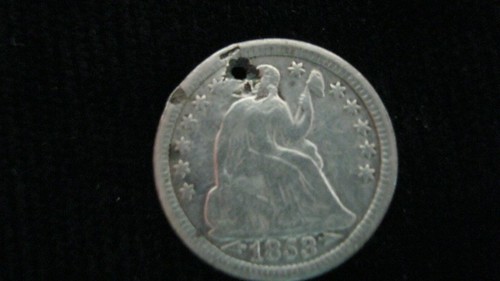
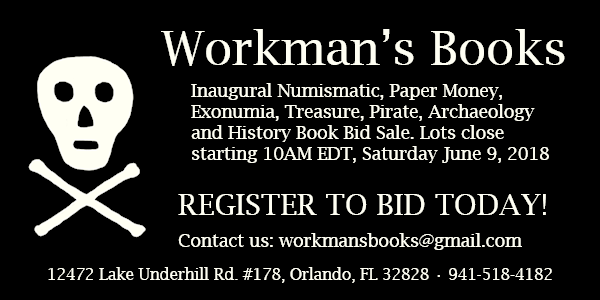
EMERGING MEDALLIC ARTISTS WINNERS ANNOUNCED
THIRD INTERNATIONAL MEDALLIC SCULPTURE COMPETITION FOR EMERGING ARTISTS
Sponsored by New Approach, a nonprofit organization
May 19 –July 29, 2018
Medialia...Rack and Hamper Gallery, 335 West 38th Street, 4th Fl, New York, NY 10018
(212) 971-0953, hours Wed.-Sat. 12pm-6pm or by appointment
www.medialiagallery.com
Medialia Gallery and its affiliated nonprofit New Approach are delighted to present the Third International Medallic Sculpture Competition for Emerging Artists, THE FUTURE IN HAND. The recipient of the 1st Prize Keiichi and Kyoko Uryu Memorial Award is Francesca Muscianesi of Italy. This exhibit of submissions and awarded work is open to the public from May 19 –July 29. The works will travel to Faculdade de Belas Artes da Universidade Lisboa, Portugal, in October 2018, and Daido University, Nagoya, Japan, in May 2019.

Muscianesi’s 1st Prize work, Memento Mori, is on display, accompanied by ten more exquisitely rendered works created by the artist since notification of her award. The prize winning piece is a haunting split-faced portrait medal that opens to reveal a waxen skull in shallow relief, inscribed in the round: “Respice Post Te, Hominem Te Esse Momento.”
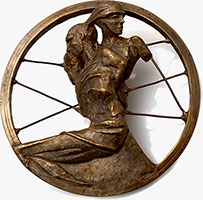 Also on display are dynamic submissions and awarded works by 2nd Prize recipient Merecdes Dorisz Molnar (Hungary); 3rd Prize recipients Armando Zelinotti (Italy) and Evgeniya Ilkove (Bulgaria); and ten purchase
award recipients: Schuyler Blanchard (USA); Teodora Draganova (Bulgaria); Lindsay Jamison (USA); Samantha Kanelstein (USA); Petra Kurucz (Hungary); Ron Kustrup (USA); Sayo Nagayoshi (Japan); Mitsuho Shibata (Japan); Natali
Ivanova (Bulgaria); and Bar Zecharya (Israel).
Also on display are dynamic submissions and awarded works by 2nd Prize recipient Merecdes Dorisz Molnar (Hungary); 3rd Prize recipients Armando Zelinotti (Italy) and Evgeniya Ilkove (Bulgaria); and ten purchase
award recipients: Schuyler Blanchard (USA); Teodora Draganova (Bulgaria); Lindsay Jamison (USA); Samantha Kanelstein (USA); Petra Kurucz (Hungary); Ron Kustrup (USA); Sayo Nagayoshi (Japan); Mitsuho Shibata (Japan); Natali
Ivanova (Bulgaria); and Bar Zecharya (Israel).
New Approach’s 3rd competition was open to artists born in or after 1980, and announcements circulated in fall 2016. The competition prospectus was released in January 2017, with entries due in September 2018. This competition was organized by Medialia Gallery and New Approach Director Mashiko. Ms. Cory Gillilland, Dr. Alan Stahl, Dr. Peter van Alfen, Ms. Gwen Pier, and Mashiko comprised the judges for the first, second and third prizes. Individual collectors selected purchase awards from the remaining medals. 14 artists from 6 countries submitted 38 medals for consideration. All awarded works received comments from the judges. Details on the competition and New Approach are located at www.medialiagallery.com .
The dream of a competition emerged in 2001 when the New Approach Contemporary Medallic Art Research and Exhibition Center was established at Medialia Gallery. Known for her passion for educating young artists about the medallic arts, Director Mashiko was approached by Japanese medallic artist Izumi Nishi about establishing an education endowment for young medallists. Nishi was the eldest daughter of the late Keiichi and Kyoko Uryu, advocates of contemporary medallic art in Japan, and international promoters of Japanese medallic art. Nishi agreed with purpose of the competition, and a first prize, dedicated to her parents legacy was established. Nishi was terminally ill and after her death the competition’s 2nd Prize was named for her. The first New Approach competition, BEGINNING, was offered in 2005–2006, and the second competition, APPROACHING HORIZONS, in 2008–2009.
AMERICAN MEDALLIC SCULPTURE ASSOCIATION EXHIBIT
2015-2018 EDITIONS BY MEMBERS OF THE AMERICAN MEDALLIC SCULPTURE ASSOCIATION
May 19 –July 29, 2018
Medialia...Rack and Hamper Gallery, 335 West 38th Street, 4th Fl, New York, NY 10018
(212) 971-0953, hours Wed.-Sat. 12pm-6pm or by appointment
www.medialiagallery.com
Medialia Gallery is proud to host TEXTURE•TEMPERATURE•WEIGHT, an exhibit of over a hundred medallic sculptures created by members of the American Medallic Sculpture Association (AMSA). Founded in 1982, AMSA encourages the creation and study of this unique art form in North America. The exhibit is curated and organized by Mashiko, AMSA member and director of Medialia Gallery.
Contemporary medallic sculpture roots are international, and trace back to the bas-relief traditions of ancient monetary coins and Renaissance portrait medals. Styles in this exhibit range from the traditions of uniface and obverse/reverse (two faced) medals, to sculptural interpretations. Materials range from traditional cast and struck bronze formats to 3D digital printing, cast resin, constructions of found objects, and combinations of other materials unconventionally used in medallic art.
108 medals created from 2015 to 2018 will be on display. The works of 42 living AMSA members are accompanied by those of five deceased members whose works have been promoted by Medialia Gallery. These artists are: gem engraver Irving Mazze (d. 2005); figurative sculptor and medalist Leonda Froehlich Finke (d. 2017); figurative sculptor Barbara Leckberg (d. 2018); art medal and commemorative medalist, former AMSA president, and first USA FIDEM delegate John Cook (d. 2014), whose death we became aware of in 2017; and figurative sculptor Mico Kaufman (d. 2016).
AMSA board member Marie Jean Lederman proposed this exhibition in 2016. After many discussions about exhibition specifications a final prospectus was announced to the members in October 2017. This exhibition was made possible by Lederman’s foresight, enthusiasm, persistence, and patience.
For more information on the exhibit, see:
www.medialiagallery.com
For more information on the American Medallic Sculpture Association, see:
https://amsamedals.org/

VOCABULARY TERMS: CAST COPY, SHRINKAGE
Cast Copy. Made by any method of molding; the original of which was a genuine piece. Cast copies run the gamut of authority, intent and quality; as it may be a facsimile, private copy, imitation, forgery or counterfeit. See COPIES and REPLICAS.
Cast copies are always slightly less diameter than the original from which they are made due to the shrinkage in making the mold and making the cast replica. Such shrinkage ranges from 1 to 4% per generation. Poorly made
casts – or by inexperienced persons – have great porosity (bubbles, bleeps, blisters) from trapped air (causing cavitations), from dirty molds and often a greasy feel from improper knowledge of release agents. Porosity,
numerous bubble marks (blow holes) and lack of sharp detail are the most evident indications of a cast copy. See shrinkage.
CLASS 11.9
Shrinkage. A reduction in size particularly in cast objects caused by the cooling of the metal from the original size of the mold. Among the properties of each metal is its rate of contraction (molecules are drawn closer together during cooling usually in uniform rate, but uneven contraction voids are known to exist). In numismatics the most popular casting metal – bronze – can shrink form 1 1/2 to 2% in diameter. For this reason a second generation cast, or any succeeding cast (called an AFTER-CAST), can be differentiated from an original by its slightly smaller diameter.
It must be remembered in all cases of shrinkage, however, that if a mold is made from the original medal the mold itself shrinks as it cools. A cast made from that mold would exhibit the combined shrinkage of both mold and cast. Thus there is no precise percentage that a second, or subsequent generation cast, can differ from the original item. Along with the shrinkage there is some loss of definition and sharpness of detail – largely due to the experience of the caster – but the most obvious criterion is the smaller diameter. See cast medals.
Measurements should be carefully made. For medallic items it is best to measure from outside rim across the widest part, to that outside rim (not necessarily from edge to edge). A method of eluding shrinkage measurement is to have a wider diameter piece (easy to accomplish in casting) that could measure greater than the original!
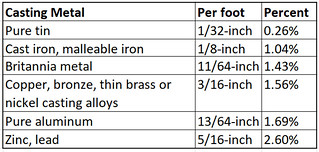 Foundry workers use a rule of thumb of 3/16-inch shrinkage per linear foot – or 1.56% – for copper, bronze or thin brass. Thicker castings shrink somewhat less than thinner castings. Since cast medals are among
thinner castings their shrinkage tends toward the high degree of shrinkage. See chart.
Foundry workers use a rule of thumb of 3/16-inch shrinkage per linear foot – or 1.56% – for copper, bronze or thin brass. Thicker castings shrink somewhat less than thinner castings. Since cast medals are among
thinner castings their shrinkage tends toward the high degree of shrinkage. See chart.
References:
O46 {1987} Pollard; “Surface Characteristics of Renaissance Medals and Their Interpretation” by Arthur Beale, pp 27-33.
CLASS 07.2
Looking for the meaning of a numismatic word, or the description of a term? Try the Newman Numismatic Portal's Numismatic Dictionary at: https://nnp.wustl.edu/library/dictionary
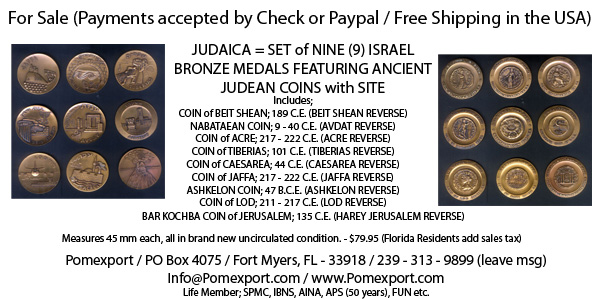
HARRY DALE KUHN (1882-1966)
This week's subject is American Numismatic Association member H. Dale Kuhn, whose U.S. silver dollar collection was sold by B. Max Mehl in 1934. -Editor
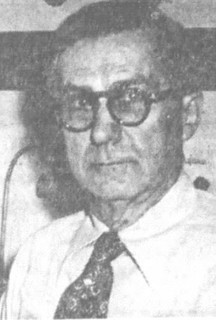 Harry Dale Kuhn (1882-1966), was born on May 13, 1882, at Jackson, Ohio, son of George Ursinus Kuhn (1855-1918), and Mary Elizabeth Bricker (1858-1947).
Harry Dale Kuhn (1882-1966), was born on May 13, 1882, at Jackson, Ohio, son of George Ursinus Kuhn (1855-1918), and Mary Elizabeth Bricker (1858-1947).
In June 1904 he graduated Ohio University of Medicine, Columbus, Ohio, with a degree in Pharmacy.
On July 8, 1904, he married Grace Agnes Skiles (1885-1951). They had four children : Walter (1905-1981), Gertrude (1906-1984), Carolyn (1908-1983), and Georgene (1916-1986).
Kuhn was a horticulturist and herbalist maintaining a beautiful garden. He collected stamps, coins, old glass bottles, arrowheads and Indian relics, historical newspapers, and pipes. His glass bottle collection comprised over 2,000 specimens.
He joined the ANA in January 1921 and was given ANA Member No. 2177.

Kuhn was a druggist and ran a pharmacy and laboratory as a manufacturing pharmacist at Kuhn Laboratories, Shelby, Ohio. Among his products were : Kuhnies Laxative "The Pill that Will", True Blue Cold Treatment, and Grandma Kuhn's Picklesweet.
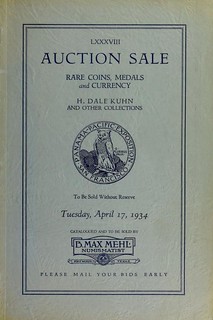 On Tuesday, April 17, 1934, he sold his coin collection at auction through B. Max Mehl, Sale #88.
On Tuesday, April 17, 1934, he sold his coin collection at auction through B. Max Mehl, Sale #88.
In December 1934, he was sued by the U. S. Attorney for the Northern District of Ohio for misbranding Kuhn's Ep-Sum pills, marketing with false therapeutic and curative claims.
He died on February 16, 1966, at Ganges, Richland, Ohio. He is buried at the Shelby-Oakland Cemetery, Shelby, Richland County, Ohio.
To read the complete article, see:
KUHN, HARRY DALE (https://sites.google.com/a/numismaticmall.com/www/numismaticmall-com/kuhn-harry-dale)
The entire inventory of the Lupia Numismatic Library is for sale. Individual items will be available before the remaining archives are broken up into parcels sold at philatelic auctions in the U. S. and Hong Kong. Check NumismaticMall.com frequently as dozens of new items with estimates will be posted daily until everything is sold.
All inquiries will be given prompt and courteous attention. Write to: john@numismaticmall.com .
HARVEY STACK'S NUMISMATIC FAMILY, PART 18
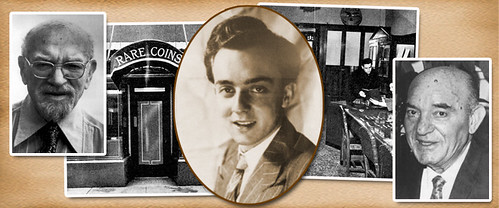
The second part of the Anderson Dupont sale took place in November 1954. Once again this was a great opportunity to get items from an old-time collection that were fresh to the market. This sale attracted the same public interest as the Davis Graves Collection had when it was sold earlier that year. This second part featured silver, copper and nickel coins and offered numerous high quality coins and rarities seldom seen in one sale.
Specifically this sale included half cents, small cents, three-cent pieces, half dimes, dimes, quarters, half dollars and silver dollars. These series ran from the first years of issue to the mid 1930s. Half cents started with 1793 and included choice examples of 1796 Pole to Cap and 1796 No Pole, followed by numerous Mint State examples, and almost all the Proofs struck -- originals and restrikes -- and a few patterns.
The minor denominations followed, mostly in Mint State or Proofs. Half dimes, starting with a half disme, comprised high quality examples in Proof and Mint State. Dimes offered choice examples from 1796 onward with representatives from all the mints up to the 1930s well represented. Quarters started with 1796 and were almost complete, including the 1823 and 1827. Half dollar varieties included 1794, 1795 3 Leaf, 1796 and 1797, and the very rare 1838-O. This series was also virtually complete through the 1930s with the majority in Mint State and Proof.
The silver dollars were also noteworthy for varieties from 1794 on, and many of the scarce and rare dates were represented. Many Mint State and Proof examples highlighted this series.
In the office, the work preparing for this sale was intense. Everyone did their job, gave up nights and weekends to get the work done, while still running the retail and mail order business, attending shows and traveling to visit collectors. I was 26 at the time and wondered how my father and uncle kept the same pace as I did. We were invigorated by the excitement of offering these two great collections at public auction. Even foregoing the opportunity of going to Egypt seemed a small price to pay for the rewards of that year.
Over the years we have been asked whether the Anderson Dupont Collection included United States gold coins. It most definitely did, and in my next article I will tell the story of those coins.
To read the complete article, see:
Harvey Stack Remembers: Growing up in a Numismatic Family, Part 18 (http://www.stacksbowers.com/News/Pages/Blogs.aspx?ArticleID=2965)
To read the earlier E-Sylum article, see:
HARVEY STACK'S NUMISMATIC FAMILY, PART 17 (http://www.coinbooks.org/v21/esylum_v21n18a22.html)

CLIFFORD MISHLER ON 55 YEARS IN IOLA
 It was on a cold and snowy late winter morning – Monday, March 16, 1963 – when I stepped into the Numismatic News office building at the corner of Washington and Water streets in downtown Iola to begin my Krause
Publications career as the associate editor of the News. The sidewalk to the entrance had been freshly shoveled by an individual I would shortly meet for the first time, Chet Krause, who had arrived on the scene in advance
of the rest of the staff.
It was on a cold and snowy late winter morning – Monday, March 16, 1963 – when I stepped into the Numismatic News office building at the corner of Washington and Water streets in downtown Iola to begin my Krause
Publications career as the associate editor of the News. The sidewalk to the entrance had been freshly shoveled by an individual I would shortly meet for the first time, Chet Krause, who had arrived on the scene in advance
of the rest of the staff.
There was a light shining from the open doorway of a small office on the immediate left inside the front entry door. Poking my head around the corner I introduced myself, as the occupant and I had not previously met. A hardy welcoming rejoinder greeted me: “Hi, I’m Chet.” That first exposure to Chet forever changed my life, much as his exposure to coin collecting, collecting old cars and similar involvements with many other hobbies changed lives in those pursuits as well.
Our coin hobby was on the threshold of exponential growth, a trend-line that in 1965-1966 would come crashing down to earth. At the time two periodicals were being published out of Iola, Numismatic News and Coins magazine. Before the summer was out, there were two more. One was Canada Coin News, which while short-lived as an Iola product, still serves the hobby today as Canadian Coin News out of Toronto. The other was The Coin Dealer, which continued into 1966.
In all, at its height around the turn into the 21st century, Krause Publications was publishing in excess of 50 periodical titles, their combined annual deadlines being nearly 800, along with more than 100 new books or editions annually that infused an active book list of more than 800 titles. The number of employees was upwards of 500. We were also producing a dozen affiliated trade/collector shows across the country from Atlantic City to Hawaii. That was a momentous, enjoyable and rewarding time to be in the hobby publishing business.
When I stepped away as president with the close of the 1999 calendar, turning the reins of the company over to another collector, Roger Case, whom I’d lured away from eastern Montana in 1988 to take charge of the numismatic division, things were starting to change. Both the Internet and eBay were still in their infancy. Both have exacted their toll, over the past 15 years, since my formal and full retirement in 2003 after 40 years, in siphoning from the marketplace strengths that print publishing had enjoyed for so many years.
To read the complete article, see:
Looking back on 55 years in Iola (http://www.numismaster.com/ta/numis/Article.jsp?ad=article&ArticleId=29250)

NUMISMATICS AT THE CONGRESS ON MEDIEVAL STUDIES

The Congress is held every year, and next year the numismatic session will be sponsored by the American Numismatic Society (an ad hoc group has organized it for the past 18 years).
The topics at this Congress run the gamut. A printed Proceedings would run to many volumes if all papers were included). Most papers are portions of doctoral dissertations or preliminary chapters from a forthcoming book. We get to hear many reports well in advance of publication.
The Book Exhibit at the Medieval Congress is totally overwhelming. EVERY new issue from university presses is sold at a significant discount, and many obscure out of print books can be had also. Numismatic books are usually scarce, but I got a fabulous bargain on one this year. There were 11 numismatic papers at this Congress (one delivered by me), seven of them in two dedicated sessions plus four papers scattered in others. Any reader interested in medieval numismatics is welcome to contact me for more information.
For more information on the Congress, see:
International Congress on Medieval Studies (https://wmich.edu/medievalcongress)
SPRING 2018 RARE BOOK SCHOOL SESSIONS
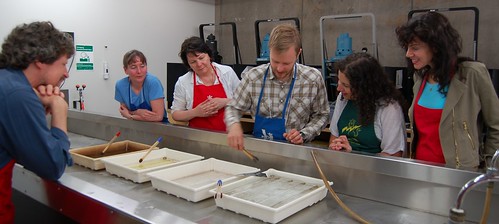
Any E-Sylum readers are pure book collectors who include antique numismatic books in their libraries might be interested in attending the Rare Book School. I picked up a leaflet on it at the International Congress on Medieval Studies at Kalamazoo last week. Here's what it says:
Join book enthusiasts from around the globe to study the history of manuscripts this summer at RBS!
The Book in the Manuscript Era, Ramond Clemens, Yale, Yale 10-15 June.
Advanced Seminar in Medieval Manuscript Studies, Barbara A. Shailor, Yale, Yale 10-15 June
Introduction to Paleography, 800-1500, Consuelo Dutschke, Columbia University, University of Virginia 8-13 July
This year's classes are pretty esoteric--advanced numismatic bibliophiles seem to be content with the earliest PRINTED numismatic book, not even thinking that there might be older numismatic manuscripts--but the Rare Book School covers different subjects every year, so it might be wise to bookmark their website.
From the web site:
Spring 2018 courses will be offered at the Lilly Library in Bloomington, IN (13–18 May) and at the Thomas J. Watson Library at The Metropolitan Museum of Art in New York City (20–25 May). Summer 2018 sessions will be held at Amherst College (10–15 June), Yale University (10–15 June), the University of Pennsylvania and the Free Library of Philadelphia (10–15 June) and at the University of Virginia (June–August).
For more information, see:
https://rarebookschool.org/schedule/

WAYNE'S NUMISMATIC DIARY: MAY 20, 2018
I have nothing new numismatically to report this week, but there were a few loose ends from last week's Nummis Nova meeting that I didn't manage to get into the previous issue. So here goes.
Dos Amigos: Joe and Julian
First, here's a photo Gene Brandenburg took just before I arrived.

Joe Esposito, Julian Leidman
British Copy of Goetz Lusitania Medal
Also at the dinner I spoke with Joe Esposito about a nice Lusitania medal he brought along. Thanks for the background and images!
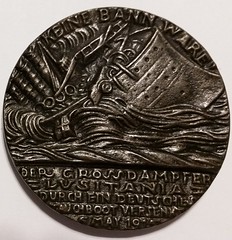
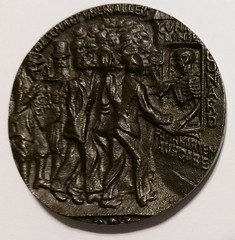
Joe writes:
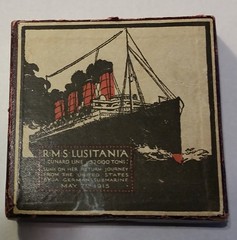 I brought along a British copy of the famous Karl Goetz medal commemorating the German sinking of the Lusitania. The 103rd anniversary of the tragedy took place on May 7, a day before our Nummis Nova dinner. The
RMS Lusitania, a Cunard passenger ship, was torpedoed by a German U-boat off of Ireland following a trans-Atlantic crossing. One hundred twenty-eight Americans died, representing nearly one-tenth of the casualties. The
sinking was widely attacked in Great Britain and in this country; a war whoop went up in the U.S., but our entrance into the Great War was delayed for another two years.
I brought along a British copy of the famous Karl Goetz medal commemorating the German sinking of the Lusitania. The 103rd anniversary of the tragedy took place on May 7, a day before our Nummis Nova dinner. The
RMS Lusitania, a Cunard passenger ship, was torpedoed by a German U-boat off of Ireland following a trans-Atlantic crossing. One hundred twenty-eight Americans died, representing nearly one-tenth of the casualties. The
sinking was widely attacked in Great Britain and in this country; a war whoop went up in the U.S., but our entrance into the Great War was delayed for another two years.
Goetz, a prolific German medalist, produced his medal alluding to the rationale for the sinking, “No Contraband Goods!” The British, in turn, reproduced the medal to arouse anger against Germany. The British piece is depicted here. The graphic medal, which is about 55 mm, is not rare by any means, but it is interesting for its reflection of an important historical event used for propaganda by both sides in the conflict. There is a fine book devoted to Lusitania medals entitled Commemoration of Death: The Medals of the Lusitania Murders by Greg Burns; see, for example: http://www.lusitaniamedal.com/assets/book_sample.pdf
Erik Larson, the bestselling writer, published a book about the tragedy, Dead Wake: The Last Crossing of the Lusitania, during the centennial year of the event, 2015. I was pleased to review the book for the Washington Independent Review of Books: http://www.washingtonindependentreviewofbooks.com/index.php/bookreview/dead-wake-the-last-crossing-of-the-lusitania
At dinner I took a picture of the accompanying pamphlet.
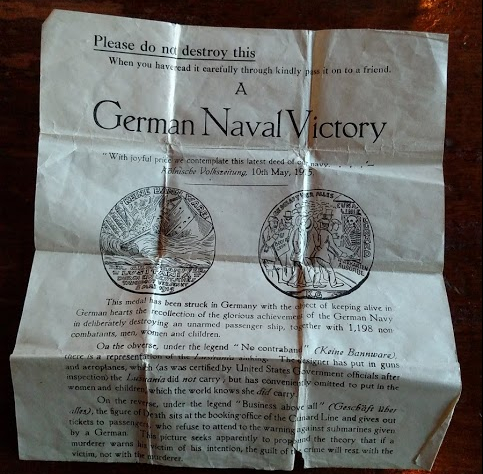
Coins and Money in Silent Films
Regarding a discussion we had about films with a numismatic connection, Eric Schena writes:
I asked my wife Heather if there were any silent movies where money was a central theme, since she is a huge aficionado of silents. Sure enough, the first one she came up with in the fiction genre is Erich von Stroheim's Greed, starring ZaSu Pitts from 1924. Originally it was over 460 minutes long (18 reels!); it's basically a rags to riches story and the impact money has on people.
She says that there are several notable scenes, including a gold tinted shot of gold coins, as well as one featuring Pitts rolling around nude in piles of money. The film was severely edited later on, and large chunks of it are now lost (a frequent fate with silents). She argues that money itself is a principal character in the movie even if it may not be numismatically specific. It is also widely considered one of the greatest silents.

For more information on Greed, see: Greed (1924) (http://silent-volume.blogspot.com/2010/10/greed-1924.html)
Eric Schena adds:
Heather also found a 1920 nonfiction film put out by the Royal Mint of Canada called How Money is Made. This one clocks in at a more reasonable 11 minutes and change and is on YouTube. It has some great old expressions, like 'banana-man" and "ticket wicket."


To watch the complete Royal Mint video, see: Minting Gold Coins: "How Money Is Made" 1920 Royal Mint of Canada (https://www.youtube.com/watch?v=daJNC51Dsbk)
To read the earlier E-Sylum article, see:
WAYNE'S NUMISMATIC DIARY: MAY 13, 2018 (http://www.coinbooks.org/v21/club_nbs_esylum_v21n19.html#article27)

NUMISMATIC NUGGETS: MAY 20, 2018
1683 Dutch West India Company Betts Medal
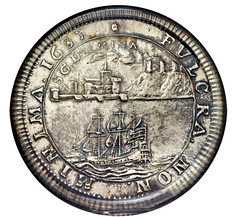
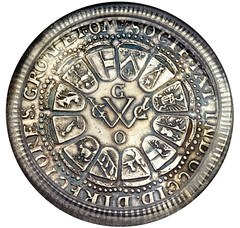
Betts-64. 1683 Dutch West India Company, Chamber of Groningen and Ommeland. Silver. AU58 PCGS. The monogram of the company (GWCVGO combined), arms of the directors of the company arrayed around. Reverse: The Dutch station at Elmina, Ghana, Fort St. George at left, Fort St. Jago (built 1666) on a hill at right, Dutch warship below. Lovely toned About Uncirculated. The fort was captured from the Portuguese by the Dutch in 1637. Located on the Ghana coast and considered at the time the finest fortification in the area, the Elmina complex controlled the trade in slaves from the interior and the export of gold from Ashantiland. Delicate bluish-steel toning enhances the eye appeal of this mostly lustrous light silver-gray medal. Well struck with full obverse and reverse border details. Very rare. Overstuck on 4 Dukats. This is the only Betts medal listed for the Dutch West Indies company
To read the complete lot description, see:
1683 Dutch West Indies Company - Betts-64
(https://www.rarelegacy.com/collections/betts-medals/products/1683-dutch-west-indies-company-betts-64)
1826 George IV Proof Two Pounds
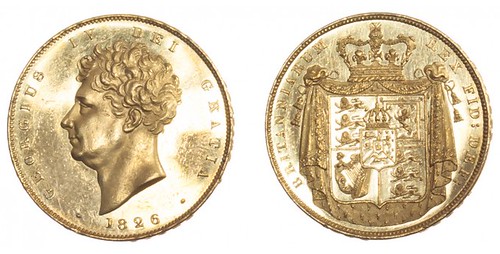
George IV (1820-30), Proof Two Pounds, 1826, edge Septimo. Bare head facing left, date below. Rev. Crowned shield upon an ermine mantle, inscribed edge reads DECUS ET TUTAMEN *ANNO REGNI SEPTIMO* (WR 228; S 3799).
To read the complete lot description, see:
George IV, Proof Two Pounds, 1826 (https://www.baldwin.co.uk/george-iv-proof-two-pounds-1826-mi65738.html)
J. Williams 1828 Convict Love Token

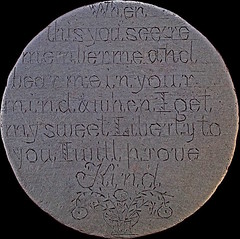
The removal of British convicts to Australia and Tasmania during the late 18th and first half of the 19th century (1788-1868 to be exact) caused much human heartache. Although the sentences were for seven or 14 years, most transportees never returned.
Tokens such as these, also known as 'leaden hearts', speak of the parting better than any official ledger. Research suggests most were made prior to departure in British prisons where convicts had access to money and, in some cases, tools.
By smoothing and engraving low denomination copper coins (typically Georgian 'cartwheel' pennies), prisoners across several generations created tokens to leave with their loved ones as mementos.
The National Museum of Australia has the world's largest collection of convict tokens, more than 300.
Design details of this particular token:
Obverse: J. Williams Aged 18 and Mary Price Aged 16.
Reverse: When this you see remember me and hear me in your mind & when I get my sweet Liberty to you I will prove Kind.
Although convict love tokens appear in public numismatic auctions, they are very rarely seen here in Australia. It is believed that the number held by public institutions in Australiacertainly dwarfs the number held privately.
This particular token is a solid example of a task that many convicts undertook before being shipped off to Australia, and is worthy of much more research.
To read the complete lot description, see:
Great Britain Copper Convict "Love" Token 1828 on Cartwheel Penny
(https://www.sterlingcurrency.com.au/items/great-britain-copper-convict-love-token-1828-cartwheel-penny-0)
1904 Bank of New Zealand One Pound Wellington Banknote
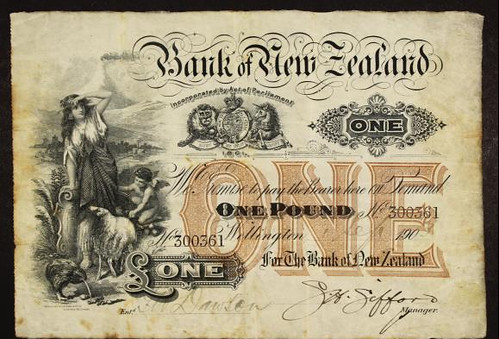
BANK of NEW ZEALAND One Pound, 300361, Wellington 1 Sep 1903, Robb 2006 15.a.ii, NZBG D521b, P S206. Foxing with some folds but free of tears with body remaining in paper. One of the finest available, 4 D521 held privately according to Robb. VF
To read the complete lot description, see:
Lot 414 BANK of NEW ZEALAND One Pound, 300361,
Wellington 1 Sep 1903, Robb 2006 (https://www.mowbrays.co.nz/mowbray-international/catalogue-numismatic/catalogue.html?group=
q9dKRfQMuZC2McS7RGEAVWZV22IlmAM6wytSbDr2BZ8
sng66r%2fYXcNGnAWrEFPbO)
French Amiens Cathedral Medal

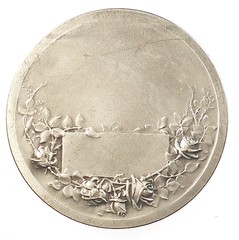
France unicorns architecture AMIENS CATHEDRAL silvered-bronze 50mm
To read the complete lot description, see:
France unicorns architecture AMIENS CATHEDRAL silvered-bronze 50mm (https://www.ebay.com/itm/153017289745?)
1953 $2 Bill Printed Fold Error

Printed fold with enormous flap from right end folded over from the back capturing the red Treasury seal, a couple of digits from the serial, and the imprinted signature of Humphrey. The upper left corner has been replaced with consummate skill. A more dramatic printed fold might not exist on red seal $2s.
To read the complete lot description, see:
Lot #19695 - Fr. 1509 $2 1953 Error (http://www.lynknight.com/items/1104092?
search%5Bcatalog_session_id%5D=1447&search%5Bcategory_id%5D=335
&search%5Bpage%5D=1)
THE BOOK BAZARRE
WALL STREET JOURNAL LOOKS AT COIN ROLL HUNTING
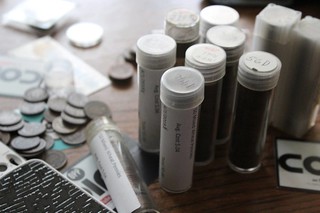 Here’s one more job that isn’t as easy as before: coin-roll hunting.
Here’s one more job that isn’t as easy as before: coin-roll hunting.
When Pamela Little, a stay-at-home mother of three from Concord, N.C., goes on the hunt, she has her iPad, a magnifying glass—and dozens of wrapped-up rolls of coins brought home from a bank.
Like her fellow treasure seekers, Ms. Little spends hours sifting through grimy nickels and dimes and other coins, looking for ever-rarer gems—older coins like wheat-back pennies (made from 1909 to 1958), silver coinage (say, Washington quarters minted from 1932 to 1964) or the odd tokens and foreign coins that make it into the rolls.
“I have always loved coins, but I never figured I had the money to collect [them],” says Ms. Little. With this numismatic niche, the only cost is the face value of the coins pulled from the rolls; hobbyists typically return any change that isn’t taken for their collection.
And if you watch the hunters’ passionate online videos about this hobby—CRH, for short—you’d think it was all fun and profit.
But the other side of the coin is that the hobby can be frustrating and occasionally combative. Hunters have to contend with a low rate of return—for every gem they find, there are many more “skunk” boxes, as CRHers call passels of rolled coins that yield nothing. A lot of the good coins have already been found. Meanwhile, many bankers are friendly, but others don’t appreciate having to haul heavy boxes of returned coins. (To say nothing of the family members and friends who think the hobby is kooky.)
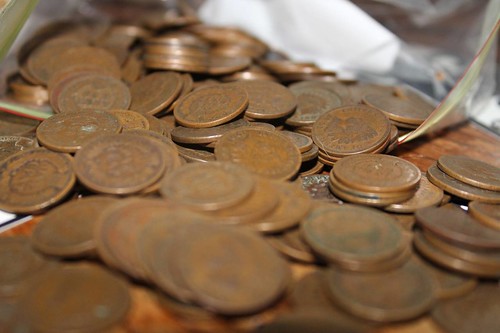
Indian Head cents collected by Dustin Morgan
To read the complete article (subscription required), see:
Coin-Roll Hunting: The Secrets of a Treasure-Seeking Hobby
(https://www.wsj.com/articles/coin-roll-hunting-the-secrets-of-a-treasure-seeking-hobby-1525659481)
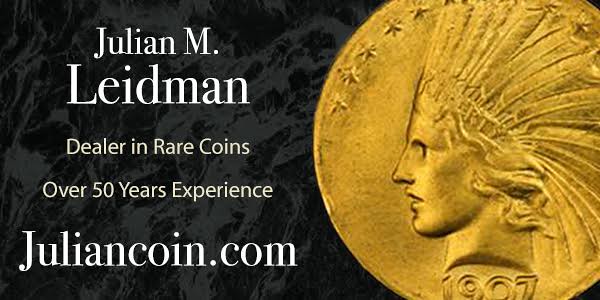
INTRODUCING: WORLD COIN GAMES
Author Gary Beals of Segovia, Spain writes:
Here is a project I have been working on. I think those buckets of coins many dealers have could be part of the answer - games played with coins in a way that sparks a desire to learn more and have fun with friends.
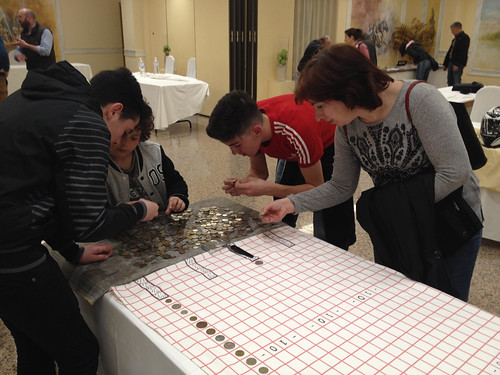
Coin collecting is as sedentary as an iPad but it delivers a direct physical connection to history, geography, politics and life around the world. Each coin we touch is something real, something that has actually been used by someone else — someone very different from us as we look at a mound of world coins. Each coin has its story to tell. Can we numismatists make those stories as interesting as the flashy games with their full color images of warriors, farms, birds and candy? Can hypnotic digital images be partly replaced with the simple authenticity of coins?
We can actually learn some important techniques from these computerized games. Their software knows precisely when a player is getting low on patience or getting frustrated. The games know when to provide positive feedback, bump someone up to a higher level of play or give out a reward. They make the interface addictive so players want to come back. Can we use a low-tech version of this to help kids become collectors? To use an industry buzzword: Are we driving value for the user?
We'd better do something because Big Tech with Big Money has really got a grip on how human behavior works and how to change it to make sales. The digital technologists know that the brain has weak pathways in making sound decisions for long-range goals. That is not where they work. They look at another more controllable part of the brain that can automatically be manipulated with suggestions.
If we want to create new behaviors in kids — or anyone else interested in coin collecting — it is the habit-forming part of the brain we must deal with. There is a three-part pleasure anticipation process involving a trigger, then action and a reward. This is engineering for surprise and delight. Snapchat uses emoji — and coin collecting uses heraldry. Is that a fair fight? Can a pile of coins and a few caring collectors make this happen with youngsters? We can hope.
The spark of competition exists in these games. We could see the games move from a single junior high school to a regional event. Just as spelling bees began as a newspaper chain promotion 90 years ago, we can hope that coin games can create a fascination that will change lives.
What is the typical or most common age when kids’ interest in coins can be captured? What are the most common types of collecting? Who gets a child started most commonly? This game works with the presumption that a lot of kids would enjoy looking through mounds of coins from nations across the globe and seeing how many they could identify.
Get dealers to donate bulk world coins, and prizes for the kids.
Keep in mind that while kids often get interested in coins because of a parent’s hobby, the opposite is also true. Back about 1958 I started collecting and my dad got caught up in the fun and began his own collection. Dealers take note: As a high school and college age kid I spent several hundred a year on coins, but my dad dropped thousands into the hobby.
We discovered something interesting during the first test / prototype games at a coin show: The games seem more fun with teams of players than with individual competitors. It also gets more kids involved in the activities. So, we recommend teams of three players with three or four teams playing.
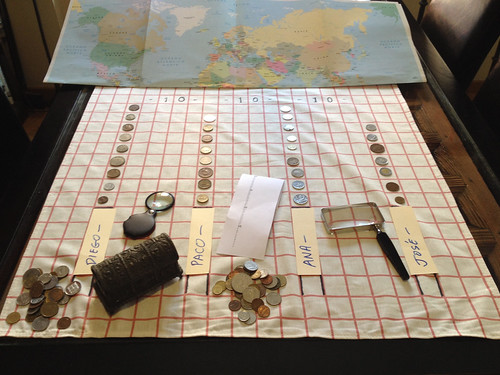
World Coins Game 1:
Finding a coin from as many different countries as possible
While single players can participate, we found that teams of two or three kids each adds a sense of cooperation to the competition. The process of picking up coins, identifying them, writing the country on the slip and
placing the coin on the game board keeps everyone busy.
Number of players at a time: Maximum of 4 teams.
Game time: Test out 10 minutes and 20 minutes (Consider kids’ attention span.)
World Coin Game 2:
Find a coin for each continent
Europe
North America
South America
Asia (China, Taiwan, Japan, India, Pakistan etc.)
Africa
Australia (Include New Zealand & Tasmania)
‘Oceania’ (Fiji, Philippines. Hawaii, Samoa, Tahiti, Malaya, etc.)
‘Arabia’ (The Middle East nations including Israel)
Rules: This is a game of speed. The first person with a coin made on each of 6 continents wins. In case of a tie, two coins on first five continents wins
World Coin Game 3:
Collecting coins of as many different coinage metals as possible
World Coin Game 4:
Collecting coins with as many different animals or plants (or both) on them
News media coverage for your kids game
One ideal use for this game is as a promotional vehicle for an upcoming coin show. It is also something a coin dealer or a network of coin dealers could do to support young collectors and of course, their businesses.
Teachers should be invited to attend your coin shows, especially those who instruct on history, social studies, geography and so on.
A provocative headline might work: What is your money IQ?
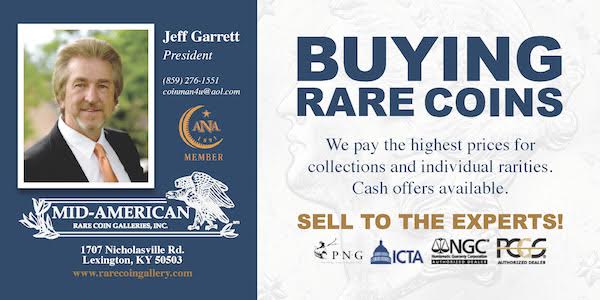
ICE CORES, LEAD PRODUCTION, AND ROMAN COINAGE
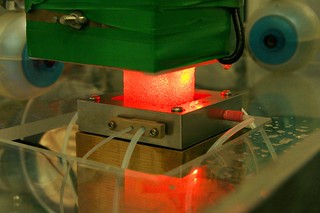 A year by year economic history of the Roman Empire might seem as impossible to reconstruct as the lost 107 books of Livy’s history of Rome. Yet something close to such a record has now been retrieved from the
unlikeliest of places — a glacier in central Greenland.
A year by year economic history of the Roman Empire might seem as impossible to reconstruct as the lost 107 books of Livy’s history of Rome. Yet something close to such a record has now been retrieved from the
unlikeliest of places — a glacier in central Greenland.
The record is written not in Latin but in lead. Lead emissions generated by mining operations in Northern Europe reached Greenland and were washed down in snowfall. The snow accumulated, turned into ice, and preserved a record that stretches back thousands of years.
Ice cores from Greenland have long been used to track global climate change, which is recorded in the frozen water’s oxygen isotopes. The project to measure ancient lead emissions in ice cores was initiated by Andrew I. Wilson, an archaeologist at the University of Oxford who studies the Roman economy.
The dates of these ice years were verified by synchronizing them with other chronologies, such as those derived from tree rings and volcanic eruptions.
The continuous record of lead pollution is not as good as having figures for Roman gross domestic product, which no one knows, but it does seem to reflect the general economic health of the Roman state.
Lead was widely used in the Roman economy for making water pipes and sheathing the hulls of boats. Its production was also a proxy for a central economic activity, the use of silver in the Romans’ standard silver coin, the denarius. Silver occurs in lead ores, and the process of separating the silver from lead at high temperatures was a major source of airborne lead. In the early Roman Empire the denarius was 100 percent silver. But under the emperor Nero, starting in 64 A.D., the proportion of silver was reduced to 80 percent and the state made a tidy profit by recycling the all-silver denarii into debased ones.
These changes coincided with, and perhaps were caused by, a drop in silver production, and just such a fall in lead emissions is recorded in the Greenland ice core shortly after 60 A.D. Under the emperor Trajan there was a brief return from 103 to 107 A.D. to making coins from newly mined silver and this historical event too is reflected in a brief spike of lead pollution that ends in 107 A.D.
Lead emissions, as reflected in the ice core, dropped to an absolute low during the Imperial Crisis of 235 to 284 A.D., when the empire nearly collapsed under the stresses of internal discord, barbarian invasions and the Cyprian plague. Thereafter the economy, to judge by lead levels, recovered a little but entered a final period of decline marked by the withdrawal of Roman legions from Britain in the early 5th century A.D. and the collapse of the western Roman Empire in 476 A.D.
To read the complete article, see:
An Ice Core Reveals the Economic Health of the Roman Empire
(https://www.nytimes.com/2018/05/14/science/ice-core-lead-roman-empire.html)
CALGARY NICKLE GALLERIES WHAT IS MONEY? EXHIBIT
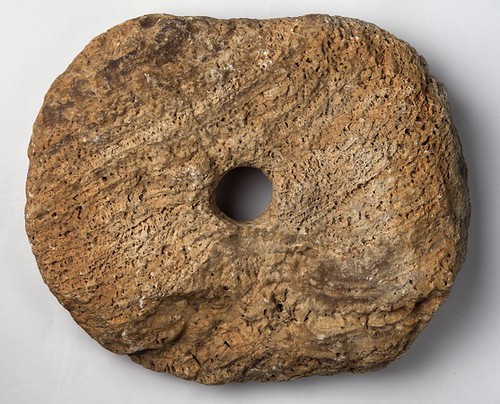
What is Money? is the newest exhibition of ethnographic objects from the Nickle’s numismatic collection, showcasing diverse forms of money used across the globe through time. From some of the earliest minted metals of the ancient world to Chinese knife money and African metalwork, from the Canadian Northwest Coast copper shields to unique stone money from the Island of Yap – the exhibition explores a range in cultural understandings of money, its value in society and asks, what is money?
George adds:
The Yap stone pictured has been borrowed from my collection.
To read the complete article, see:
What is Money? (http://nickle.ucalgary.ca/exhibitions/item/what-money)

COINS OF THE TIGRIS AND EUPHRATES VALLEY
Coin Treasures Coming To Long Beach
“Tyrants of the Tigris & Euphrates” exhibit showcases nearly 2,600 years of numismatic history at June 2018 Long Beach Expo
The second public display of a portion of the extensive numismatic treasures in the recently revealed Tyrant Collection (www.TheTyrantCollection.com) will include outstanding examples from the origins of coinage including a rare example of the world’s first gold coin. “The Tyrants of the Tigris & Euphrates” exhibit will be at the June 14-16, 2018 Long Beach Coin, Currency, Stamp & Sports Collectible Expo (www.LongBeachExpo).
The exhibition will showcase more than 350 important ancient to modern coins of the Tigris and Euphrates rivers valley including rulers of the Mesopotamia region from Cyrus the Great in 546 B.C. through Saddam Hussein in 2003. Many of the coins in the $10 million dollar display are the finest known of their kind.
The owner of The Tyrant Collection wants to remain anonymous while he shares the collection’s coins with the public for their educational value through a multi-year series of displays at the Long Beach Expo. The owner has assembled an unprecedented private collection of coins of tyrants of every age and every major civilization. Each section of the far-reaching collection is named after the principal water source of the civilization.
The second exhibition in the series will focus on coins from well-known early civilizations, such as the Lydians, Ionians, Parthians and Ottomans, as well as lesser known coin-issuing empires and tribes, such as the Abbasids and Ilkhans.
“The inaugural Tyrant Collection exhibition of English coins, ‘Tyrants of the Thames,’ this past February was a tremendous success and we heard many compliments from collectors, dealers and the general public,” said Ira Goldberg, President of Goldberg Coins and Collectibles, Inc. (www.GoldbergCoins.com) in Los Angeles, California.
“This next display will feature nearly 2,600 years of superb condition coins from Ionia, Persia, Turkey and Western Asia. In Greek, Mesopotamia means ‘(land) between the rivers.’ Mesopotamia is the land between the two great rivers, the Tigris and the Euphrates. Mesopotamia spawned the earliest civilization, which included writing, mathematics, metal working, the wheel, and spectacular wealth,” explained Goldberg who provided guidance in assembling The Tyrant Collection.
“The Tyrants of Mesopotamia is the longest collectible series of coins. Quite a challenge!,” he added.
Highlights of “The Tyrants of the Tigris & Euphrates” exhibition will include:
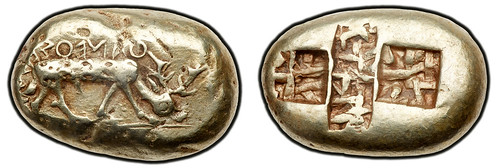
• Ionia, Ephesus Phanes electrum Stater, circa 625-600 B.C., one of the earliest recorded coins to bear both a type and inscription. It is one of only five known and one of the most historic of all ancient coins.
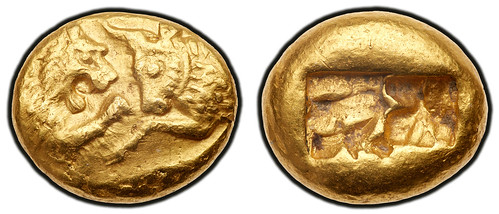
• King Kroisos gold Stater prototype, Sardes mint, circa 564-539 B.C., one of only about two dozen known of the world’s first coin struck in gold. The Kroisos type coinage is one of the most recognizable of all ancient Greek kings of Lydia coinage, and this example was formerly in the Zurich Money Museum Collection.
• Darius gold Daric, circa 500-485 B.C., Kings of Persia. A magnificent, exceptionally well struck example of the rare Type III variety (with two pellets behind the beard) struck during the period of the Ionian Revolt.
• Mazaios Stater, Satrap of Cilicia, circa 361-334 B.C. depicting King Artaxerxes III on one side and a lion on the other. Formerly in the Eduardo Levante Collection.
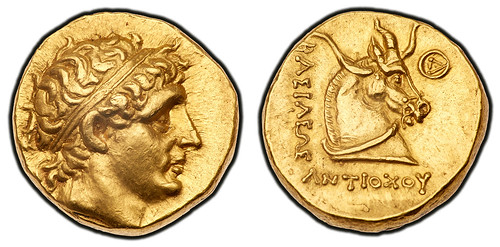
• Antiochos gold Stater, Seleukid Empire, circa 280-271 B.C., an apparently unique variety of the exceedingly rare issue depicting a bridled horse head to right, with braided, horn-like forelock.
• Mysia, Pergamum gold Stater struck during the reign of Alexander the Great, circa 334-332 B.C. with less than 20 examples known.
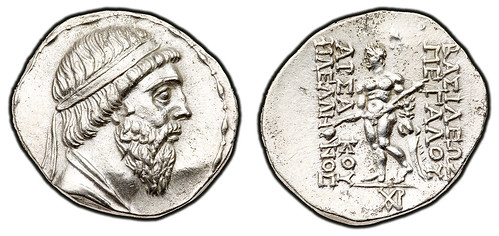
• Parthian Kingdom Tetradrachm of Mithradates I, circa 164-132 B.C. depicting a magnificent Hellenistic portrait of the king.
• Kings of Parthia, Tetradrachm depicting King Phraatakes on one side and Queen Musa on the other, Seleukeia on the Tigris mint, circa 2 B.C.-5 A.D.
• Sasanian Kingdom, Khusru II gold Dinar, 590-628 A.D. A magnificent example, formerly in the Sunrise Collection, with King Khusru II depicted on one side and Anahit, the goddess of fertility, healing, wisdom and water, on the other side.
• Sasanian kings, Azarmidokht silver Drachm, 631 AD, an extremely rare coin depicting King Husrav (Khosrau) II, and formerly in the William B. Warden, Jr. Collection. “The entire Tyrant Collection undoubtedly is the world’s most valuable rare coin collection in private hands, worth hundreds of millions of dollars,” said Goldberg. “These exhibits with different coins displayed at upcoming Long Beach Expos will be a once-in- a-lifetime opportunity for many collectors, dealers and the public to see in person some of the world’s most significant rare coins. Visitors to the June Long Beach Expo can receive a free, illustrated booklet about this latest, amazing exhibit.” The June 2018 Long Beach Expo will be held in the Long Beach, California Convention Center located at 100 S. Pine Ave. Additional information is available at www.LongBeachExpo.com.

MICKLEY 1804 DOLLAR AT LONG BEACH
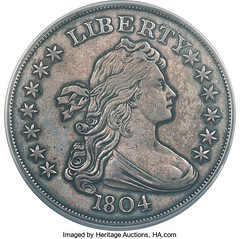
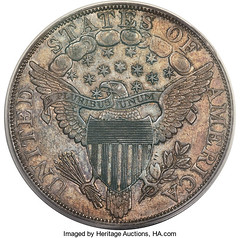
1804 dollars deserve headlines every time they come to auction. Heritage is proud to feature the Mickley-Hawn-Queller specimen, a Class I "Original", as one of the offerings in the June 14-17 Long Beach Signature Auction. This coin will cross the block as a part of the Premier session, scheduled for the evening of Thursday, June 14.
For more than a century, the 1804 dollar has reigned as the "King" of U.S. coinage, a fitting title to bestow on a coin made for royalty. The U.S. Mint received orders to strike complete sets of proof coinage meant to serve as diplomatic gifts for sovereigns such as the Sultan of Muscat, the King of Siam, and the Emperors of Cochin-China and Japan. While most denominations specified by the Mint Act of 1792 were still in production in 1834 and thus simple to produce as proofs, the silver dollar and gold ten dollar (eagle) had not been struck for many years — since 1804, the Mint's research found. There was just one catch: those silver dollars struck in 1804 were made from carryover obverse dies and did not bear that date. When the Mint struck those silver dollars dated 1804 and a few spares, an inadvertent rarity was created.
Matthew Stickney became the first confirmed non-royal, non-government-employee owner of an 1804 dollar in 1843, when he traded a gold Immune Columbia piece — a remarkable numismatic delicacy — as well as other coins to the Mint Cabinet to get his example The second confirmed piece to come into a collector's hands was this very coin, which had come into the possession of bank teller Henry C. Young in October of 1847 and was sold to now-legendary numismatist Joseph J. Mickley the same day.
After the Civil War, the market for the various 1804 dollars blossomed. The Mickley specimen offered here sold at a W. Elliot Woodward sale for $750 in October 1867, while the Chapman brothers cracked the four-figure mark and coined the phrase "King of the U.S. series" in May 1885 when they sold the Dexter specimen for $1,000. While those Originals were setting records, the Second Restrike or Class III coins, artificially worn and given artificial backstories were working their way toward marketplace acceptance.
Prices for 1804 dollars at auction soared as the decades passed. In 1960, the Davis Restrike 1804 dollar brought $28,000 at auction, while in 1970 the Mickley Original specimen realized $77,500. In 1980, at one of the U.S. coin market's great heights, the Berg Restrike example reached $400,000, while the 1989 offering of the Dexter Original representative saw it go for $990,000, another bull-market record tantalizingly close to the million-dollar threshold. The Stickney Original piece, which in 1946 was the first five-figure U.S. coin at $10,500, became the first seven-figure 1804 dollar and the most expensive U.S. coin ever auctioned when it sold as part of the legendary Eliasberg Collection in 1997 for $1,815,000. The Sultan of Muscat Original, universally considered the best-preserved of 1804 dollars, leapfrogged that price to bring $4,140,000 in 1999, a record price for any coin that stood for several years and still the highest price realized at auction for any 1804 dollar.
This piece, encapsulated in a PCGS PR62 holder, was last offered at auction in the 2013 Chicago Signature Auction, where it realized $3,877,500. It is our privilege to offer it once again in Long Beach as a part of the Geyer Family Collection.
To read the complete lot description, see:
1804 $1 Original PR62 PCGS Secure. "In all of n...
(https://coins.ha.com/itm/proof-early-dollars/1804-1-original-pr62-pcgs-secure/p/1276-239004.s)
1904 OLYMPIC GOLD MEDAL FOR BASKETBALL
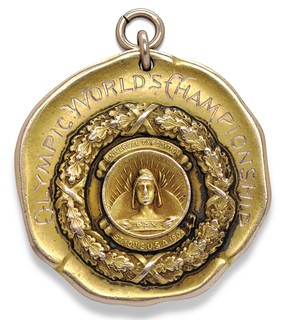

BASKETBALL – An Olympic Gold Medal awarded for Basketball to George Louis Redlein (1885-1968), St. Louis, 1904.
True Olympic gold: a superb artifact of the original “Dream Team”. Just a dozen years after the rules of basketball were codified by James Naismith, basketball appeared on the world stage as a demonstration sport at St. Louis in the third modern Olympiad. St. Louis in 1904 was the first American city to host an Olympics. The 1904 games were also the first to award gold, silver and bronze medals, and one of only three Olympics in which the winners were systematically presented with solid gold medals. When the Olympics returned from an eight-year hiatus in 1920, the European economies were so decimated that the era of "true" Olympic gold ended. Olympic basketball was not played again until 1936.
The men’s basketball competition was held on 11-12 July 1904 with six American teams in the running: the Buffalo Germans, West Side and Central YMCA from Chicago, “Turner’s Tigers” of San Francisco, the Missouri Athletic Club, Central YMCA of St. Louis, and Xavier Athletic Club of New York. Each team had to play five games within these two days. The Buffalo Germans were a young team formed in 1895 at a YMCA under the auspices of Fred Burkhard, who learned the game from Naismith himself. The Germans began by playing other junior teams but by 1898 were competing with the men. The first national basketball tournament was held during the Pan-American Exposition in Buffalo in 1901 and the Germans took the trophy without a single loss—even though the team’s average age was still only 18.
George Redlein joined the Germans sometime after the Pan-American Exposition and before the Olympics, which took place the summer before his freshman year at Syracuse University (he also played for his college team). Redlein was one of only six men on the Olympic team. The Germans swept all five of their Olympic games, with only the New York and Chicago men giving them any kind of fight. With this victory, on top of the 1901 Pan-American, the Buffalo Germans now styled themselves the World Champions of basketball and went pro. “The Germans became the most-feared team in the country, playing against the best pro and amateur teams in the world, and winning with relative ease. The Germans claimed no particular style or strategy; they simply dominated in every aspect of the game” (Basketball Hall of Fame). The team lasted for 30 years with an overall record 792-86. They won 111 games in a row between 1908 and 1911. The original Buffalo Germans, including Redlein, were inducted into the James Naismith Memorial Basketball Hall of Fame in 1961, honored as “basketball’s first great team.”
Gold medal, 14 karats (tested), with attached metal ring, the obverse cast in relief with bust of Hermes holding banner inscribed “PAX” within a large wreath, inscribed “Olympic World’s Championship / Universal Exposition / Commemorating the Louisiana Purchase 1803 / St. Louis U.S.A. 1904,” the reverse inscribed “BASKETBALL / George L. Redlein / L.F.” and impressed by the maker “Dieges & Clust / 95 St. John St. N.Y. / Solid Gold” (without bar), 33mm diameter and 19.2 grams.
To read the complete article, see:
BASKETBALL – An Olympic Gold Medal awarded for Basketball to George Louis Redlein (1885-1968), St.
Louis, 1904. (https://www.christies.com/lotfinder/books-manuscripts/basketball-an-olympic-gold-medal-awarded-6145960-details.aspx)
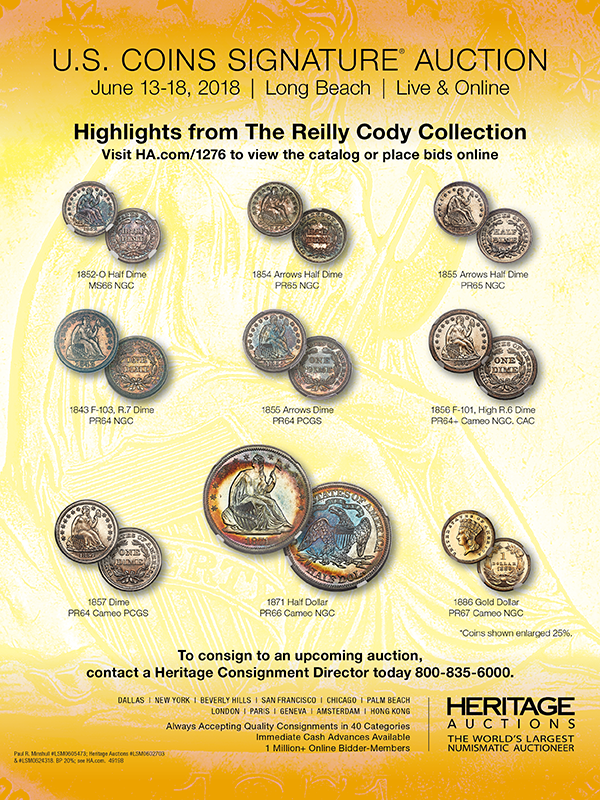
BANK OF ENGLAND CLOSES BOOK ON KNICKERS HEIST
The Bank of England is still almost £80,000 out of pocket as it has stopped pursuing former staff accused of stealing banknotes in an audacious robbery in the late 1980s and early 1990s.
Banknotes due to be incinerated at the Debden facility were instead smuggled out inside workers’ underwear in the alleged crime, though a lack of witnesses meant only one person was successfully prosecuted.
The remainder were sued by the Bank, which cited their "high living" as evidence.
Judge Norman Rudd of the High Court declared in 1994 that they had stolen from the Bank, and four couples were ordered to repay a total of almost £700,000.
Last month the Bank said “substantially all of the funds stolen in 1992” had been recovered, revealing the information in the minutes of a meeting the the Court, the institution’s board.
As a result the “Court agreed that it would be right now to draw a line.”
However a Freedom of Information request sent by the Telegraph has revealed the Bank is still out of pocket.
Only £618,670 of the £697,000 ordered has been returned.
The case was turned into the ITV film Hot Money, starring Caroline Quentin, as well as a Hollywood movie with Diane Keaton and Katie Holmes.
To read the complete article, see:
Bank of England still £80,000 short after ‘cash in knickers’ theft
(https://www.telegraph.co.uk/business/2018/05/19/bank-england-still-80000-short-cash-knickers-theft/)
ANOTHER D. B COOPER SUSPECT NAMED
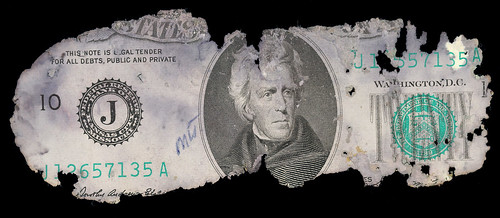
The quest to reveal the identity of “D.B. Cooper” — the alias of the daredevil who hijacked a Northwest Orient flight from Portland to Seattle in 1971 and parachuted out of the plane with $200,000 — has come up empty for almost 50 years.
But the mystery of the only unsolved skyjacking in U.S. history has fueled a cottage industry of authors, documentary makers and self-appointed sleuths who believe they’ve done what the FBI could not. Or at least want to make some money claiming they have.
On Thursday, a whole new theory emerged from Carl Laurin, an 84-year-old pet sitter who lives in DeLand, Fla. Laurin, his Michigan publishing firm announced at a news conference, has written a memoir detailing the confessions of a longtime friend who supposedly committed the crime: Walter R. Reca, a former military paratrooper and intelligence operative.
One problem: Reca, who lived in Oscoda, Mich., died in 2014 at the age of 80. A second problem: The FBI closed its D.B. Cooper investigation in 2016. A third: Laurin and his publisher, Principia Media, never vetted their theories with the FBI. And a fourth issue: The FBI said it would reopen the case only if someone found any items related to the hijacker’s parachutes or money, neither of which Laurin could dig up.
To read the complete article, see:
A new ‘D.B. Cooper’ suspect? Yet another possible identity for the elusive
hijacker. (https://www.washingtonpost.com/news/retropolis/wp/2018/05/17/a-new-d-b-cooper-suspect-yet-another-possible-identity-for-elusive-hijacker/)
To read earlier E-Sylum articles, see:
D.B. COOPER RANSOM BANKNOTE OFFERED (www.coinbooks.org/esylum_v19n35a35.html)
CERTIFYING THE D.B. COOPER RANSOM BANKNOTES (www.coinbooks.org/esylum_v19n36a20.html)
D. B. COOPER MYSTERY CONTINUES (www.coinbooks.org/esylum_v18n48a43.html)
D.B. COOPER EVIDENCE CLAIMED (http://www.coinbooks.org/v20/esylum_v20n03a20.html)
TRUMP SLOGAN ON $20 BILLS
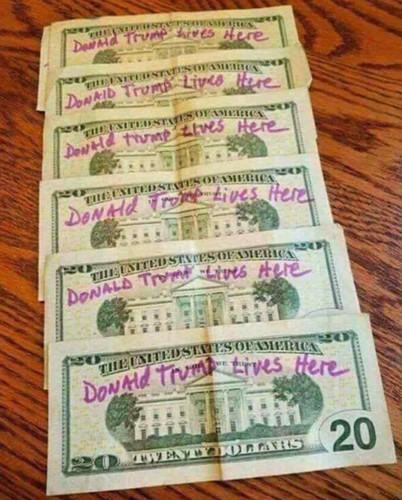
MAN WRONGLY ACCUSED OF PASSING FAKE $10 BILL
Emory Ellis, who lived on the streets in Boston, ventured into a Burger King in November 2015 to buy breakfast.
He left the restaurant under arrest, wrongfully accused of trying to pay for his meal with a fake $10 bill. He spent more than three months in jail.
This week, Ellis, 37, sued Burger King and the store franchisee for nearly $1 million, saying he was discriminated against for being black and homeless. The lawsuit comes amid a resurgence in a national debate about the treatment of black people in businesses and public spaces.
“I know that had I walked into the Burger King with the exact same $10 bill, nobody would have scrutinized it,” said Ellis’s attorney, Justin Drechsler. “I never would have been accused of anything. I certainly wouldn’t have had the police called on me, no matter what the series of events.”
Ellis was arrested and charged with forgery of a bank note. The arrest spurred a probation violation, and Ellis was held without bail until his final probation violation hearing, the lawsuit said.
Ellis was held until February 2016 after the Secret Service determined the $10 bill was real, according to the lawsuit. His money was never returned.
Have any of our readers been in a situation where a cashier questioned a banknote? What happened? Why should anyone have to sit in jail while the Secret Service gets around to making a determination? For facts, email me. For opinions, see the 500+ entries in the article's comment section, and feel free to add your own. -Editor
To read the complete article, see:
A Burger King worker thought a black man’s $10 bill was fake. He
was arrested. Now he’s suing. (https://www.washingtonpost.com/news/business/wp/2018/05/17/a-burger-king-worker-thought-a-black-mans-10-bill-was-fake-he-was-arrested-now-hes-suing/)
IN OTHER NEWS: MAY 20, 2018
A Tour of the May 2018 PAN Show
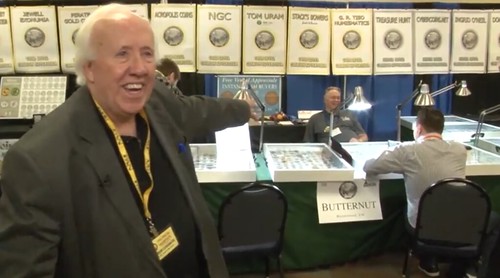
Longtime PAN member Patrick McBride walks you around an actual coin show. You will meet the dealers and what they deal. Find out why the PAN Coin Show is such a favorite for numismatic events.
To read the complete video, see:
CoinTelevision: So You Want to Attend a PAN Coin Show? VIDEO: 10:00. (https://www.youtube.com/watch?v=raIKeNFyCpE)
More Recollections of John Pett
To read the complete article, see:
John Pett remembered by his friends (http://www.coinsweekly.com/en/News/John-Pett-remembered-by-his-friends/4?&id=5350)
To read earlier E-Sylum articles, see:
JOHN PETT (1951-2018) (http://www.coinbooks.org/v21/esylum_v21n17a11.html)
IN OTHER NEWS: MAY 6, 2018 : More on John Pett (http://www.coinbooks.org/v21/esylum_v21n18a36.html)
Article Profiles eBay Arts & Collectibles Lead Sam Bright
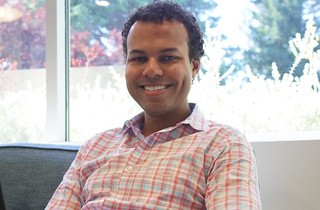 With his jeans and sneakers and unassuming demeanor, Sam Bright fits right in. But there’s an unmistakable intensity to this head of eBay’s multi-billion dollar Arts & Collectibles platform that hints at great
depth beneath the surface, as well as the reasons for his unparalleled success.
With his jeans and sneakers and unassuming demeanor, Sam Bright fits right in. But there’s an unmistakable intensity to this head of eBay’s multi-billion dollar Arts & Collectibles platform that hints at great
depth beneath the surface, as well as the reasons for his unparalleled success.
With more than 50 million listings, from sports memorabilia to comics and cryptocurrency, Arts & Collectibles had its most profitable year at eBay in 2017—Bright’s first at its helm. While the company refuses to release exact figures, Bright says, “2017 was the marketplace’s highest gross merchandise volume year for the total Art & Collectibles category in the Americas. Additionally, the category had the highest absolute dollar gross merchandise volume ever, across five [sub] categories.”
“Art & Collectibles housed more than any other vertical in my mind,” says Bright. “Where else could I go from sourcing and servicing Elvis’ piano to partnering with [designer] Brad Ford to decorate the most expensive penthouse in New York?” The position also gives Bright an inside track for growing his own collection of Morgan silver dollars, gold bullion, and the occasional bit of Black Panther-themed swag. But the goods eBay sells don’t get Bright as excited as the good he believes he can do there.
To read the complete article, see:
SAM BRIGHT HAS THE MULTI-BILLION DOLLAR TOUCH AT EBAY (http://www.blackenterprise.com/meet-sam-bright-ebays-golden-bullion-boy/)
Ships Unearthed in Virginia
Nestled in centuries of dirt and debris, several well-preserved ships and artifacts have been unearthed that offer a glimpse of life at what was once one of the busiest ports in the North American colonies.
At the site for Robinson Landing, a new townhouse and condominium development along the Potomac River here, excavations have uncovered the protruding, curved wooden bones of the ships. Three ships were scuttled and buried here centuries ago as Alexandria sought to expand its land into the deeper waters of the river.
The ships, she said, are by far the most striking discovery for the local community. But the urban archaeologists, who are required by city law to be present on any construction site, also found a trove of ordinary items that highlight what colonial residents were using, discarding and trading.
In the rubble of privies and the crumbled foundations of buildings, they found seeds, beads, pins, animal bones and a few pieces of jewelry. There were tokens from Newgate Prison in London and Spanish and Irish coins, signaling the beginnings of international trade.
To read the complete article, see:
Ships Unearthed in Virginia Offer Glimpse of Colonial Era
(https://www.nytimes.com/2018/05/06/science/ships-archaeology-alexandria.html)
The Inventor of Time Banking?
The Lesson: Everyone has value and there are no throwaway people – which is why Dr. Edgar Cahn invented Time Banking: a currency built off reciprocating talents, time, and experience that is bringing communities around the world together and opening up new worlds of value and connections.
Notable Excerpt: “I feel that people, if you give most people a chance, would say, ‘I’d love to think of myself as a kind, decent human being. How can I do that?’ When you ask them politically, they feel alienated from a system that has sent them a message that they don’t matter; that their voices don’t matter. I think it’s a matter … of using vehicles that say you can create alternatives. I think we need a whole mentoring squad to make that feel real. I think Peace Corps did that. I think that there were times when we had that as a dominant culture. When the hot thing to do was not to be negative, but at least being negative gives you an identity if you don’t have any other options and I just think that time banking is neither left nor right – [it is] only respect for human beings, only respect for capacity and if we begin to appeal to the capacity of people to be bigger than themselves, I think they will respond.”
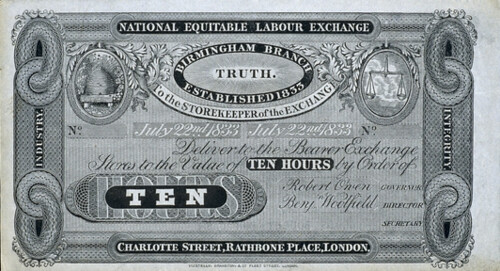
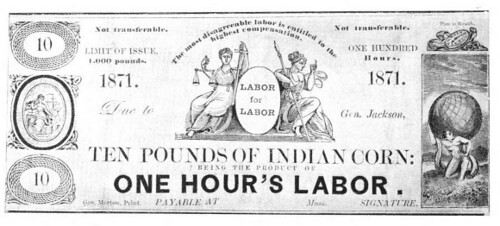
To read the complete article, see:
This ‘Currency’ Lets People Trade Talents in Exchange For Services
(https://www.goodnewsnetwork.org/this-currency-lets-people-trade-talents-in-exchange-for-services/)
To read earlier E-Sylum articles, see:
EURO CRISIS REVIVES TIME BANKS AND LABOR EXCHANGE NOTES (http://www.coinbooks.org/esylum_v15n37a24.html)
LABOR EXCHANGE CURRENCY IN THE UNITED STATES (http://www.coinbooks.org/v20/esylum_v20n01a32.html)
BURIED BACKYARD SAFE YIELDS CASH AND JEWELS
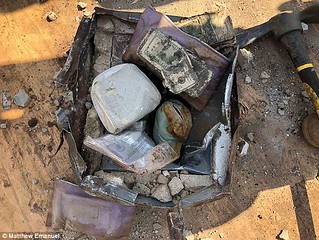 The Emanuels discovered a silver box in their own yard, but for years never paid it much mind. They simply thought the box at the base of some trees was nothing more than a cable box. However, when they went to
replace the trees on the side of their home they learned a surprising truth.
The Emanuels discovered a silver box in their own yard, but for years never paid it much mind. They simply thought the box at the base of some trees was nothing more than a cable box. However, when they went to
replace the trees on the side of their home they learned a surprising truth.
They decided to bring in Bamboo Bob to replace the trees, only to discover the mysterious box was actually a safe.
Of course when you find treasure, you have to open it. In the safe, the couple discovered thousands upon thousands of smelly, soaking wet and stuck together dollars just rotting away.
“And there are all these bags with hundreds and jewelry, diamonds, engagement rings, dozens of rings, gold with jade,” Matthew said. “It was stunning.”
The Emanuels made another discovery: a paper with an address which they linked to their neighbors.
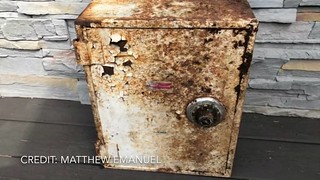 “First I knocked on the door and I asked them if they were ever robbed and they said they were,” Matthew said.
“First I knocked on the door and I asked them if they were ever robbed and they said they were,” Matthew said.
The NYPD says a burglary was reported at their neighbors’ home in 2011. Stolen was a safe with about $52,000 worth of property.
The Emanuels decided to return it to what ended up being a very happy couple. The neighbors didn’t want to go on camera but say they’re both surprised and grateful.
To read the complete article, see:
Couple Stumbles Across Valuable ‘Treasure’ On Their Staten Island Property
(http://newyork.cbslocal.com/2018/05/14/safe-found-in-staten-island-property-buried-treasure/)
To read the Daily Mail article, see:
Couple tidying their garden realize that an old metal 'cable box' under their trees is
actually a stolen SAFE and is full of diamonds, gold, jade and cash (http://www.dailymail.co.uk/news/article-5731807/Staten-Island-couple-stolen-SAFE-diamonds-gold-jade-cash-backyard.html)
To read earlier E-Sylum articles, see:
THE MUTILATED CURRENCY DIVISION (http://www.coinbooks.org/v20/esylum_v20n24a14.html)
HONEY, THE COW ATE MY WALLET, HONEST (http://www.coinbooks.org/esylum_v05n13a13.html)
WHOLE SHIPMENT OF DIMES SPILLED
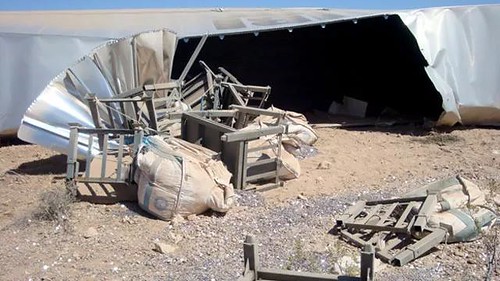
A semi-truck carrying $800,000 in dimes crashed and spilled its load on Interstate 15 near Glendale, which is located northeast of Las Vegas, Tuesday.
NHP said the truck was contracted by the United States Treasury Department.
A recovery team collected the dimes and the scene was cleared by 10:30 a.m., NHP said.
Semi-truck carrying $800K in dimes overturns on I-15 (http://www.fox5vegas.com/story/38150849/semi-truck-carrying-800k-in-dimes-overturns-on-i-15)
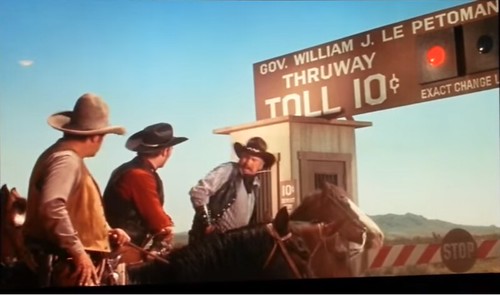
To watch the complete video, see:
Blazing Saddles - ___________________ (https://www.youtube.com/watch?v=Xw8hcXBA7X4)
FEATURED WEB SITE: IRNS PUBLICATIONS
This week's Featured Web Site is IIRNS Publications, a major publisher of books on Indian Numismatics. Thanks to Pabitra Saha for passing this along.Established in 2008, IIRNS PUBLICATIONS LLP is a Publisher and book distributor. Our focus is on publishing high quality reference and academic books especially on Numismatics, Art History, Iconography, Epigraphy, Archaeology, History etc.
www.iirnspublications.com

